Wouter J. Hanegraaff's Blog, page 2
September 25, 2020
Enter: The Gods (interview)
On February 28 this year, just before the the Corona wave hit us, I gave a keynote lecture at the international workshop "Religious Drugs" at the Department for the Study of Religions of Masaryk University, Brno. During the conference I was interviewed by Jana Nenadalova for the journal Legalizace, and the interview was published in Czech translation. Below you find the English version.
* * * * *
With a Dutch expert on alternative spirituality, we moved from ancient Egypt to the Amazon rainforests to discuss changes in consciousness, experiences of divinity and the meaning of life.
J: Your speech yesterday was really interesting. Can you recap some of its main thoughts, and perhaps explain what you mean by entheogenic experience?
H: Well, basically I tried to connect two phenomena with each other. My speech was focused on Roman Egypt – Egypt under the dominion of the Romans, in the first centuries of the common era. This whole culture, and a lot of its practices, especially the religious ones, have often been interpreted by scholars as “magic.” And I’ve discussed some examples from the so-called “Greek Magical Papyri.” These were edited by a German scholar, Karl Preisendanz, who also gave them that title. He interpreted everything as “magic” because that’s how he looked at ancient Egyptian religion: it was all “magic” in his eyes, which for him was just another word for “superstition.” It’s quite important to realize that when a text just spoke of “visions,” he wrote “magical visions,” “plants” became “magical plants,” and so on. Why? Because the word “magic” had negative connotations that fit quite well with dominant stereotypes of Egypt, which stood for all that irrational, superstitious stuff that could be nicely opposed to Enlightenment rationality and science. I see this as an extremely biased way of looking at that type of Egyptian religious practice. Many of these texts describe strange visions, encounters with gods, and all kind of things that wouldn’t normally happen to people in their normal mind. As a result, many scholars have thought “well, doesn’t that prove then how irrational and superstitious these people were? They must either have made it all up, or if it really happened to them, then they must have been crazy, out of their minds.”
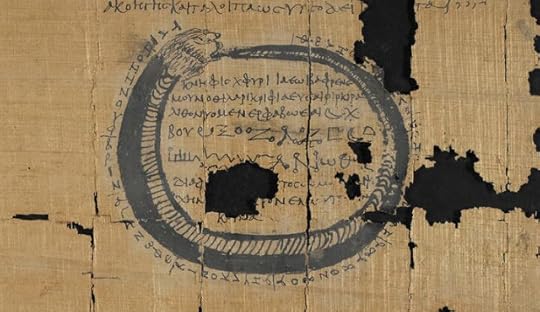
So in my lecture I focused on a specific case, a famous text that is known as the “Mithras Liturgy.” If you look closely enough, then you have to conclude that the use of entheogenic substances played a rather important role in what is described there. And if that is the case, then you don’t have to assume that these people were crazy – quite the contrary, you have a perfectly rational explanation for what happened to them. After all, we know from clinical evidence that if you take a perfectly healthy individual and give him LSD, he will have very strange visions and experiences. He is not crazy, he is just having a hallucinogenic experience. Looking closely at the sources, for instance you find a specific kind of incense, kyphi, that had mild but well-attested narcotic properties and was used all over Egypt. But the specific case of the “Mithras Liturgy” goes much further, and may be considered one of the most important “trip reports” that we have from late antiquity. It describes a really spectacular visionary sequence and includes the detailed recipe for making an “eye paint” that you need to rub in or around your eyes to have such visions. It contains several components that are known to be psychoactive.
J: Can you mention them?
H: Of course. It includes the blue lotus, which was common in Egypt, has been analyzed and turns out to have hallucinogenic properties; the same goes for myrrh; and then there is a question about the Sun scarab, which also goes into the recipe. This part is more speculative so I wouldn’t insist on it; but sun scarabs live on dung heaps, which typically contain the mycelium of psilocybin mushrooms, so it is reasonable to assume that these scarab beetles may have been loaded with psilocybin. Whether or not there is something to that suggestion, a further important ingredient of the recipe is a plant called “Kentritis.” We cannot find out anymore which plant that was, but the Egyptians at the time must have known it. The text gives precise instructions about how to make an eye paint by combining these substances, which you then have to rub into or around the eyes, where the skin is thin. It will take some time to start working and then you will have those visionary experiences. It’s all very straightforward. I find it amazing that almost none of the major specialists has called attention to it.
J: So why exactly can those experiences be explained through drug-induced states of consciousness better than in other ways?
H: First of all, the recipe is there, and the text says explicitly that it is “necessary” to make the ointment and apply it to your eyes. How much more evidence do we need, given the spectacular visions that follow? There have been great scholars studying this text in detail, but they have not provided any reasonable alternative explanation for the visions. For instance, one major specialist says “well, how does it work? You have to inhale rays of sunlight.” True: the text does say that. But then I would ask “OK, so try it out: find a sunny spot and start inhaling sunlight. Are you going to feel lifted up into the air and see visions of gods?” I don’t think so. It’s simply not sufficient as an explanation. It seems to me that this particular case of the “Mithras Liturgy” is perfectly straightforward, because you have the combination of spectacular visions and a detailed recipe that the text says you need to use if you want to experience them too. The other cases I talked about are more complex.
J: Would you say that Altered States of Consciousness in general are an important factor in human culture, or in human experience throughout history?
H: Definitely. But then you have a broader concept of “altered states” that does not necessarily involve drugs or psychoactive substances. There are many ways to alter consciousness - it can be done by music, by drumming for instance, by sensory overload, but also by under-stimulating your senses.
J: You mean sensory deprivation?
H: Sensory deprivation, exactly. For instance, there’s a fantastic book (I’ve reviewed it recently) by Yulia Ustinova, a Russian/Israeli specialist of ancient Greece.
J: I know her, she’s writing about shamanism -
H: And ancient Greece, yes. She talks about people going into caves. It’s interesting to see how many visionaries, people who have revelations (think of prophets such as the prophet Muhammad), are said to have retreated to a cave over long periods of time. There they meet a spiritual entity, for instance the angel Gabriel. So what Ustinova emphasized is very simple. Initially we might think “what’s the point? Why go into a cave to meet the gods?” But if you actually do enter a cave, you will discover what that must have meant in antiquity – when you didn’t have any of the media that we have today. A first thing: it’s extremely dark, there really is no light at all (we take artificial light for granted, but you wouldn’t have any of that). And secondly: it’s completely silent too (and again, in our world full of noise and background buzz it’s hard to imagine how intense that could be). Under such conditions, the brain will compensate for the lack of sensory input by producing hallucinations. These can be either visual or auditory, so you will hear voices and see visions. That is just what the brain does: it will happen to any of us under such circumstances. Of course, most of the rough material of the visions comes from culture: if you live in India you might see Indian gods, a Chinese Buddhist might see the Buddha, the Greeks might see the Olympian gods, and so on. I’m not saying that this is the universal key for everything, but I think that sensory deprivation may be a pretty major key for understanding some of the spectacular revelations that are reported by religious visionaries. If there is truth to this, it means for instance that a great world religion like Islam may have its ultimate origins in revelations of this kind, visions and auditions in the darkness and silence of a cave – I think that should be pretty big news. In this case, of course, we are not speaking about entheogenic substances: I’m not suggesting that prophet Muhammad was taking drugs! Not at all, but he did go into a cave.
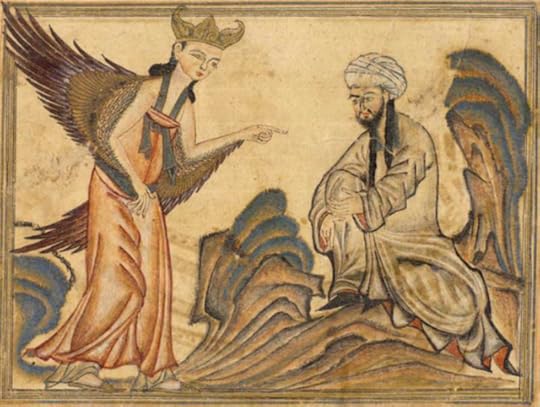
Likewise, in a more recent book, Yulia Ustinova talks in much broader terms about the great importance of alterations of consciousness in ancient Greece. She needs a pretty big book to simply lay down all the textual evidence, which is quite overwhelming. Of course, what make ancient Greece particularly interesting is the fact that we have all learned about the Greeks as the original rationalists, the founders of modern science, and all that. The reality is quite a bit more complex.
J: Maybe we can skip to terminology for a while. If I understand it correctly, you distinguish between religion and spirituality. What is the difference?
H: Well, I’ve recently started to push the term “spirituality” as a scholarly term. One reason is strategic. If you look at the academic study of religion at the moment, internationally, you can see that we are in trouble. We are in the defensive, there is less and less money available, and we are outclassed by media personalities who are often very confident talking about religion although they are no specialists and often don’t know much about it. So you get famous physicists or psychologists talking about God, or about religion, unaware of how complex the issues really are. As historians of religion we seem to be missing the boat: we have failed to come up with a really convincing story about religion, and often it’s theologians who take our place. We have not succeeded in explaining to the public at large that study of religion is something very different from theology: that it’s not about your own beliefs but about trying to understand the phenomenon of religion from a scholarly perspective, historically, socially, etc. So I have come to the conclusion that “religion” has not served as a good brand: if you’re telling prospective students that you study religion, too many of them still think “oh, that’s about churches and doctrines and so on.” It just doesn’t work.
Now there has been empirical research by sociologists about what common people generally understand by “spirituality,” and they found that it’s essentially defined as focused on the individual, on personal experience, and on practice. If you image-google spirituality, you get meditating people and lots of candles – so it seems that people subconsciously associate spirituality with a light in the darkness.
J: Nice metaphor!
H: Isn’t it? But anyway, “spirituality” understood as individual, experiential practice is a specific type of religiosity that should be recognized as such and must be studied in its own right. I am not saying it should take the place of religion in my discipline, of course not; but I think we must create a place for it.
J: And what can we understand by the term of “entheogenic esotericism,” specifically?
H: Well the word comes from entheos ἔνθεος, which means something like the divinity inside. Not a divinity that comes from within, but one that enters you, takes possession of you. It has to do with that experience of being overwhelmed by the gods, divinities or a divine force.
J: From the outside they come inside.
H: Yes. And consider our very common word “enthusiasm,” which we all use. It comes directly from enthousiasmos, which means very much the same thing. Being filled with a god.
I define “entheogenic religion” in a double sense: a broader and a narrower meaning. In a broader sense it covers forms of religion based on alterations of consciousness induced by any means – for instance music, drumming, dancing, sensory deprivation. In a narrow sense you’re dealing with those forms that are specifically induced by psychoactive substances.
“Esotericism” is a different matter. I use it as an umbrella term that covers what I call “rejected knowledge”: basically everything that has been rejected and put into the “waste basket of academia” since the 18th century. Everything that we used to think was beyond the pale for serious scholars, such as magic, astrology, alchemy, all this strange stuff that was considered “irrational” and was neglected by research. The study of “Western esotericism” is all about putting those ideas and tradititions and practices back on the table. So if you then combine the terms, “entheogenic esotericism” in the wider sense would be again all this kind of stuff in so far as alterations of consciousness are central in it, and in a narrow sense it would be specifically induced by drugs.
J: Why is it that people don’t like the term “religion” but are more able to accept spiritualities? Can it be a consequence of secularization?
H: Yes, we live in a society where religious institutions are not dominant anymore. Christian churches used to be totally merged with state power, but they became essentially like private enterprises since the 18th century already, so what you see is the emergence of a kind of “religious supermarket.” That situation has become ever stronger, and nowadays you might say that most of us in secular societies are walking around in this supermarket of religion and spirituality. You stroll around there with your trolley and think “oh, I like meditation,” so you put some bits of Buddhism in it; “oh, but having been raised Catholic I do have that weak spot for Maria,” so you put her in too; and “oh, I’d like to try these drugs,” so let’s get a bit of that. And so on. You make your own mixture that fits to your personal taste as a consumer.
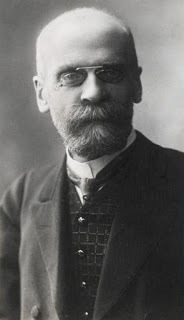 Religion is no longer part of the bedrock of society, as in the time when scholars like Durkheim could still define “religion” basically all part and parcel of society. For Durkheim, “magic” by contrast was something non-religious and hence asocial. I would say that situation pretty much belongs to the past, at least in Western secular societies. Nowadays religion takes many forms, it’s very much individualized, and so it becomes a consumerist thing. And of course with the internet and social media you get a kind of acceleration of such processes – you just look on your phone and you are linked from one thing to another, you may encounter bits and pieces of traditions, mixing them according to your own preferences and making something out of it that fits your personal tastes.
Religion is no longer part of the bedrock of society, as in the time when scholars like Durkheim could still define “religion” basically all part and parcel of society. For Durkheim, “magic” by contrast was something non-religious and hence asocial. I would say that situation pretty much belongs to the past, at least in Western secular societies. Nowadays religion takes many forms, it’s very much individualized, and so it becomes a consumerist thing. And of course with the internet and social media you get a kind of acceleration of such processes – you just look on your phone and you are linked from one thing to another, you may encounter bits and pieces of traditions, mixing them according to your own preferences and making something out of it that fits your personal tastes.J: So how does using entheogens or other drugs like psychedelics fit this pattern? How can they answer people’s questions and people’s needs in this supermarket?
H: It’s actually a complex question. I’m talking about “entheogens” here, using a terminology that bestows a religious or spiritual meaning on psychedelics. We are not talking here about such substances as cocaine or alcohol. The “psychedelics” terminology, on the other hand, is more psychological than religious or spiritual: it means that something is done that allows the mind, or soul, or spirit to manifest itself. If you are raised in a certain kind of society, you will take certain things for granted; and our culture tends to suggest that psychedelics is just some kind of play, some kind of illusion: a “trip.” But what we know about psychedelics or entheogens is that in fact they often allow people at least temporarily to distance themselves from the default cultural conditioning that they are used to and see it for what it is. I think that’s one reason why users so often say that through psychedelics they have gotten in touch with what their true values are, what they really want in their life: “is it really just this all this consumer stuff that I want, or getting power or money? Or are such pursuits not ultimately so important and there are other, more important things to pursue?” This helps explain why psychedelics and entheogens are becoming quite successful and popular nowadays: it is because we are living in a society where the mainstream institutions no longer provide answers to questions about the meaning of life and those kinds of things. So most people in contemporary society feel like they are drifting – unless you are a solid member of a church or another religious community, of course. But if you are a typical individual consumer on the neoliberal market, then society isn’t telling you what the meaning of your life is. I do think, however, that people feel a need for those kinds of answers.
J: They are searching for them.
H: Yes, they are searching for those answers and they cannot find them. What you see with entheogens is that they often lead people to a level of their mind or consciousness where it’s easier for them to find what’s really meaningful to them. So yes, I think they respond to a need, in our current very much secularized and individualized society, for finding answers about the deeper meaning of your life.
J: What about the current phenomenon of psychedelic or entheogenic shamanism? Can you describe how it emerged in recent decades?
H: Well, shamanism is originally a very specific term that comes from Siberia. It was Mircea Eliade, the famous scholar of religion, who came up with this idea of a generic shamanism that supposedly existed everywhere. That is a bit problematic, because those cultures are different, and what you find in Siberia is not the same as what you find in South America and so on. So I’m very skeptical about the shamanism terminology, but it has certainly become very popular. Eliade himself actually played down the importance of psychedelics and entheogens in shamanism, but after the sixties you see that his universal shamanism is often combined with the growing interest in psychedelics, see for instance Carlos Castaneda. What you see very clearly is that the “frontrunner” in contemporary entheogenic shamanism is ayahuasca, and South American forms of shamanism more generally. Because ayahuasca is a very powerful entheogen, it has been used in a ritual context for a generations and generations in the Amazon forest. It has taken on new ritual or ceremonial forms under the influence of modern psychology and therapeutic traditions, and spread to the West. So these workshop leaders are described often as shamans, although again, I’m not so sure whether that’s the right term. There is also a non-entheogenic and non-substance modern shamanism, of course, beginning with Michel Harner with his “core shamanism,” which induces altered states through drumming.
J: What is his precise role in this approach?
H: Well, Michel Harner – that’s actually a good story. He began as an anthropologist doing research in the Amazon forest and drinking Ayahuasca with native cultures there. He had impressive experiences and began doing rituals himself, but then after the sixties he was not able to continue organizing those workshops due to prohibition of psychedelics. So then he developed an alternative form of shamanism based upon rhythmic drumming. Apparently this had a very strong effect as well, so he developed it as a legal alternative for using ayahuasca or other entheogens. It became very popular. You might say that the ayahuasca type of shamanism just took a bit longer to join popular culture again. Although of course, already in the fifties there were some famous people, like Alan Ginsberg and William Burroughs, who went looking for ayahuasca in the Amazon region.
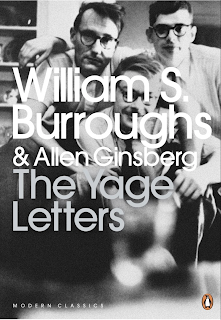 J: The beat generation.
J: The beat generation.H: Exactly. But ayahuasca didn’t really become mainstream until the nineties. So the bottom line is that Michel Harner was a kind of pioneer, and when finally prohibition became a little bit less strict so that it became easier to get access to the psychoactive substances of original forms of entheogenic shamanism, they merged together.
J: And how is this connected to ayahuasca churches like Santo Daime from Brazil, and others?
H: Santo Daime, União do Vegetal, and Barquinha are Brazilian churches based upon Ayahuasca as a sacrament, so they are mixtures of Amazonian native religions and Christianity, mostly Catholicism. They use Ayahuasca – in the Santo Daime they call it Daime, which means “give me” – as their sacrament. Daime is a sacred substance to them, so you go to this church and get administered a glass just in the same way as Catholics who receive the eucharist. They are singing their own hymns and get into very powerful altered states under the influence of their sacrament. Santo Daime has spread from Brazil to other countries in America and Europe. There have been all kind of legal battles in my own country. These have been quite important, because in the Netherlands for about 18 years (since 2001) religious use of ayahuasca was legal: the court had decided that to ensure their freedom of religion, it must be permitted to the Santo Daime to be able to drink their sacrament. So religious freedom in this case overruled drug legislation. I think this was correct, for we know that ayahuasca is perfectly safe if used in a responsible manner under proper supervision in such a religious context. Unfortunately the decision was overruled by a higher court on the European level a few years ago. So for a long time in the Netherlands you could just go to the Santo Daime church, and after an intake you could drink Ayahuasca with them.
J: So it’s basically because of European legislation that ayahuasca cannot be drunk legally in the Netherlands anymore?
H: As far as I know, what happened is that a member of the Santo Daime thought “OK, now that we have this freedom in the Netherlands, we should bring it to the European level.” Unfortunately this led to a court case without proper legal advice. When the original court decision took place in 2001, there was excellent legal assistance; but that was not the case now, and in such sensitive cases you really do need to know exactly how to proceed. So unfortunately, the result was the opposite of what had been intended.
J: I read your article about Terence McKenna’s and his brother’s search for ayahuasca brew in 1971, which resulted in their long-standing hallucinogenic visions about the nature of the time and the eschaton of the world. Can you explain what happened to them in the Amazon forest?
H: Oh right, you want me to tell that story…
J: It’s a great story!
H: I mean, this is going to be a long interview then! Well, as briefly as possible, Terence McKenna was a typical hippie of that generation. He with his brother and some friends were totally fed up with mainstream Western society and were looking for answers in entheogenic shamanism. They had heard about mysterious hallucinogens in the Amazon forest, and so they ended up in a place La Chorrera in Colombia, the Putumayo region. They actually didn’t find there what they were looking for, but they did find lots of mushrooms, so they made a brew from it. Terence’s brother Dennis (who is now a well known ethno-pharmacologist) had a kind of revelation under the influence of the mushroom trip, and was making a very strange sound. In trying to interpret that, these guys embarked on some really wild psychedelic speculation: if you could make that kind of sound under the right conditions, then they thought it should be possible to “break through” to a completely different dimension of reality. Then you would get a kind of rippling effect and finally, after the 24-hours sun cycle, the whole of humanity would be enlightened!

So to do this experiment, they tried to make ayahuasca. For that you needed the ayahuasca vine (banisteriopsis caapi) plus DMT-containing plants, because that combination is what ayahuasca is all about. But McKenna in a footnote of his book admits that they weren’t sure they picked the right plants… So nobody knows what they may have put in that brew! We will never find out. Believe me, it was far more dangerous than they realized. I’ve been to the Amazon, and our guide told us that if you pick ten plants at random, the result will always be a deadly poison. So I’d say they were lucky to escape with their life. Also, take into account that the ayahuasca vine is an MAOI inhibitor. If you put mushrooms in the mix, as they did, then the result will be that the psilocybin effect will get boosted enormously. Instead of couple of hours, you may get a trip of twenty-four hours that may be five or six times stronger than normal. That, plus those other plants that we don’t know about. So this brew, whatever was in it, must have been something quite spectacular. In the middle of this gigantic trip, Dennis actually started making that sound again, so everybody got excited: “now it’s happening! we are breaking through to the other side!” Of course, when they finally came out of the forest, they found to their disappointment that the world had not gotten enlightened. It seems that Terence McKenna could never really accept this. In the seventies he wrote this book together with his brother, The Invisible Landscape, in which he develops a complete theory about the structure of time. It basically says that there are larger and smaller cycles of time and there’s a culmination point coming soon, in 2012.
J: Of course.
H: At that moment a whole series of cycles would end and there would be a big transformation of everything. 2012. OK, to finish the story: at one point McKenna met up with José Argüelles, a spiritual author fascinated with Maya culture and the Mayan Calendar. They put their theories together and came up with specific a date: 21st December 2012. That idea got disseminated through popular culture and everybody got very excited. I don’t know whether you remember this.
J: I remember it very well – it was all over the news…
H: Yes. One of the major Dutch newspapers (Het Parool, based in Amsterdam) made a big joke of it by bringing out their very last issue on that day, special issue for the last day of the world. That was quite fantastic. I have some good friends who were totally convinced that the great transformation was going to happen on december 21 and nothing would ever be the same anymore. That all of us would move into a different state of consciousness on that day. So Terence McKenna is one of the main authors at the origin of this theory – and it all started with some absolutely weird entheogenic experiments in the Putumayo region in Colombia.
J: That’s really a nice story, I love it.
H: Yeah, me too! [smile]
J: Why do you think that those narratives about the changing of the times and the end of the world are so popular in these days?
H: I think they have always been popular, there has always been an attraction for these kinds of apocalyptic stories. However, today we are living in very difficult times indeed: I mean the climate crisis, the fear of animal extinction, the huge economic-social problems that we are dealing within a world-wide level, and so on. Also the fact that through social media and the internet we are constantly bombarded with information about everything. So we are overwhelmed by all this negative information as well, and I think many people are just very worried about where we are going. I am no exception. It’s natural for eschatological theories to come up in such times: the belief that we are moving toward a crisis, and perhaps it will end in disaster, but perhaps we will move through it towards something better. That’s very attractive, very understandable. So yes, I think we’re definitely experiencing a sense of crisis, a crisis of meaning, of what life is all about, of where are we going and so on.
J: So people are creating stories about this change, about all of those things?
H: Yes, we are creating stories. That is what religion does. Telling stories.
J: You wrote an article about Louis-Alphonse Cahagnet, who you consider to be perhaps one of the very first psychonauts. Can you describe his story?
H: Well, you’ve really been reading my stuff. Thank you, I feel flattered! [both laughs]
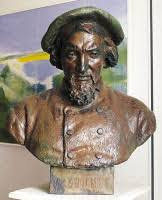
Cahagnet was a French spiritualist. An interesting guy, not an intellectual, he worked with his hands but was very smart, very intelligent. I have a liking for him. He was working with somnambulic visionaries. Artificial somnambulism, as it was called, was this technique for bringing people into a trance state, during which they would claim to travel into spiritual realms and to other worlds. It was very popular at that time. Magnetizers were mostly men and the persons who went into a trance were usually women. So Cahagnet wrote three volumes about his experiments with somnambulic women. They told him the most amazing stories about other realities, other worlds, they traveled to other planets, they saw angels and all kinds of stuff like that. So Cahagnet got quite frustrated: he wanted to see it all for himself too. But he had no talent for trance himself; and even if you did go into somnambulic trance, you would lose you consciousness and afterwards wouldn’t remember anymore. But he wanted to go there in a conscious state, he wanted to experience it himself. And so he started experimenting with drugs. He tried to find old recipes and hallucinogenic plants. He was really willing to go out there, but nothing worked. He actually poisoned himself several times, got very sick, but nothing worked. Until one day he found “hashish of the orient.” Just in a pharmacy: it was legal at that time, you could just buy it.
J: Really?
H: Yes, that’s a bit hard to imagine now. Hashisch had this aura of “oriental mystery.” Cahagnet didn’t smoke it, he dissolved it in coffee, drunk it, and then a couple of hours later it begun to work. He had this absolutely amazing experience, that he say answered all his questions: he got the sense of a complete overview of his whole life. It’s actually quite funny to read the “trip report” of somebody who had no predecessors and absolutely no idea of what to expect. After this, he started to organize sessions with people that he invited to his apartment in Paris. He handed out the hashish to them and became the center of a kind of psychonautic community. And he wrote a book about it. It’s almost never quoted but I think it’s actually a very important text. It was read by most of the founders of the occultist movement for decades after that, and was quite influential.
J: And what’s the name of the book?
H: In French: Sanctuaire du spiritualisme (Sanctuary of Spiritualism, 1850). It was translated into English as The Celestial Telegraph (same year).
J: Why did this entheogenic breakthrough remain hidden from the wider public?
H: Well, it was basically a minority religion. I don’t think that it was kept secret deliberately. Spiritualism was actually a kind of mass movement at that time, and entheogenic practices spread to some extent in that context. Occultists came out of spiritualism but developed their own rituals, techniques and practices. There was a discrete culture of entheogenic usage in occultism, which has not been systematically studied until quite recently: see Christopher Partridge’s book High culture: Drugs, Mysticism, and the Pursuit of Transcendence in the Modern World, which is very valuable. Still, much of this is still largely unexplored territory.
J: How does Aleister Crowley and his famous love for drugs and bizarre sexuality fit into this atmosphere?
H: I have to say that I’m not a specialist of Crowley. I prefer to look at things that are people are not studying, and it almost seems as though everybody is studying nothing but Crowley these days…
J: OK, I understand.
H: But anyway, Crowley was experimenting certainly with mescaline, with hashish, at one point with heroin, and that got pretty fatal, because he ended his life as an addict. We just heard at this conference that this was the cause of his death – I didn’t know that. Basically I can repeat what was said earlier [in the conference]. On the one hand there is this practice of ritual magic, which requires disciplines, focus, attention and so on. On the other hand, there is the use of drugs in occultism, because they open up the mind to other dimensions than normal rational consciousness. Basically, it seems that Crowley was interested in anything that could get him there. And there’s a certain tension I think, between those two approaches.
J: So how do you consider the impact of this entheogenic occultism on later 60ties counterculture. Is there some connection?
H: Of course. I’m just reading the diaries of one of the early pioneers of the fascination with UFOs, Jacques Vallée. They are fascinating to read, as he gives you a very direct insight in the California counterculture of the seventies. And yes, already then it was all about Crowley, but also about the satanism of Anton LaVey, who was a good friend of Vallée. And in this whole culture everybody was experimenting with drugs, especially with LSD, but other substances as well. So those approaches merged in a natural way, you just can’t skip it in that period.
Then, of course, around 1970 prohibition happened and things changed. Nixon basically used psychedelics as an excuse for putting members of the counterculture into prison. The authorities wanted to break its power, and the drugs were a handy means of doing it. And it must be said: the establishment won, the counterculture lost. That’s very clear. So hippies start to concentrate on meditating instead, they got a bit older too, so they got kids and responsibilities. And the radical movement went underground. One of our PhD students, J. Christian Greer recently defended his dissertation about what happened in the eighties. This whole underground movement of psychedelia went underground and was flying very much under the radar of the authorities. Because they were using zines: handmade magazines that you would basically circulate among your friends through the mail. So you get this whole network of people who are the heirs of the sixties and seventies psychedelic subculture, and the authorities don’t really know about them. Then in the nineties, of course that movement begins using the internet.
J: What do you think are the benefits that people can gain from entheogenic visions nowadays?
H: Well, I think you have to specify for what kind of substance. Because I think it’s different for each one.
J: You may choose any substance you want.
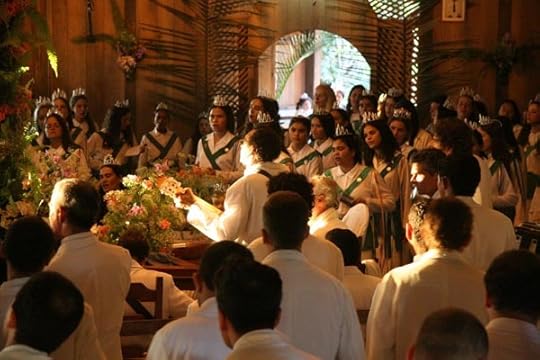 Santo Daime ceremony in Mapia (Brazil)
Santo Daime ceremony in Mapia (Brazil)H: Let me think… Well, for example ayahuasca. Basically, as I already said, it has this ability of making people take a distance from their normal social roles. As far as I can tell, ayahuasca is one of the most powerful therapeutic substances in the field of psychedelics, of course if it’s taken in a responsible setting by people who know what they are doing. A few sessions with ayahuasca can potentially be the equivalent of years of therapy, so I think there’s a huge potential for helping people who are struggling with difficult stuff from their childhood, from other things that happened to them, whatever. There were some remarks earlier this day about risks; and unfortunately there’s an increasing trend of commercialization. Around the time of the Santo Daime verdict, there was a case in the Netherlands where somebody was said to have died in an ayahuasca ceremony. Police did not disclose the full information and there’s good reason to assume that in fact it was not actually ayahuasca but something else. But of course, the effect on the general public is predictable: they will think “oh my God, look how dangerous it all is.” Media sensationalism makes it difficult to be nuanced in these domains.
J: True. We had a similar case in Czech Republic, people got poisoned from fake ayahuasca and the “shaman” spent some time in jail. Now the mainstream media automatically links ayahuasca with danger. But anyway, back to a more positive note – what is your relationship to music? I know that beside your academic career, you are also a classical guitar graduate…
H: Well, I love music! I originally was a classical guitar player. I attended conservatory, but then I realized that I didn’t want to end up teaching pupils the first beginnings of guitar for the rest of my life, so I moved into the different direction. But I love music, and in this context – there is a very interesting relation between entheogens and music. Because one of the effects it has, and that goes for many psychedelics, is that one’s sense of music gets three or four-dimensional.
J: Wow…
H: Yes, most users of psychedelics will tell you that even if they listen to music they know very well, it gains an entire new level of depth that is hard or even impossible to explain. Another aspect is that in many entheogenic contexts, like ayahuasca, music plays a crucial role; because people are experiencing very extreme states of consciousness and the music is something they can hold on to, it guides them through the process, again in a way that’s not easy to explain. You have the ikaros in native American contexts. The same goes for the Santo Daime with their hymns. So I think music and entheogens are kind of “natural allies”. They go together: they can both induce alterations of consciousness.
J: Do you think that music itself can be a means to a transcendental state?
H: Yes, I think so. I have experienced that myself. You must be in a kind of a receptive state, at the right moment with the right musician. I remember several cases where I was just completely in another world. There are also documented cases, for instance I’m thinking of a French pianist Pierre-Alain Volondat, who won one of the largest piano competitions in the world, the Queen Elizabeth Contest. He was playing this extremely difficult piano concert by Franz Liszt, in front of this large audience and broadcast live on TV, so he must have been under a lot of pressure. He says that he remembers putting his hands on the piano – and then heard the applause. He couldn’t remember anything of what happened. He clearly got into some kind of a trance state and played so brilliantly that he won both the public price and the jury price, which had never happened before. And if you listen to the recordings (scroll down here for the audio - I find these Brahms ballads simply one of the best live performances I've ever heard) I think you can hear that they are really of transcendental quality. I do think that great musicians, I mean the really greatest ones, sometimes have that ability to enter into an altered state while playing, while still having all the technique at their disposal. I think that’s really something extraordinary.
 Pierre-Alain Volondat, Queen Elizabeth contest 1983
Pierre-Alain Volondat, Queen Elizabeth contest 1983J: One last question – what do you think about prohibition of entheogenic substances and psychedelics?
H: I think it’s quite irresponsible for society to simply prohibite substances if research shows that they have the ability to seriously help people who cannot be helped in other ways. One colleague of mine, a well known professor of psychiatry in the Netherlands, gave a public lecture not so long ago – slide after slide full of double blind studies, figures, figures, figures, and he basically said that psychiatry has not made any real progress for 15 years or so. There are no new ideas, no new theories, no new practices, nothing. With one exception: it seems that psychedelics are the only thing that actually works and offers new potentials for treatment. More than that, he told us that it works for almost all the major psychiatric problems: anxiety, depression, trauma etc. That’s not a fairy-tale but very well documented. So I think we need a rational approach to these substances instead of one that’s just based on fear without proper knowledge. It’s time for politicians to get over the stereotypes and understand that there’s a real potential here for helping people who are struggling with serious problems.
Betz, Hans Dieter, The “Mithras Liturgy”: Text, Translation, and Commentary, Mohr Siebeck: Tübingen 2003.
Cahagnet, Louis-Alphonse, Sanctuaire du spiritualisme: Étude de l’âme humaine, et de ses rapports avec l’univers, d’après le somnambulisme et l’extase, Paris 1850.
Greer, J. Christian, Angel-Headed Hipsters: Psychedelic Militancy in Nineteen-Eighties North America, Ph.D. Dissertation: University of Amsterdam 2020.
Hanegraaff, Wouter J., Esotericism and the Academy: Rejected Knowledge in Western Culture, Cambridge University Press 2012.
----, Western Esotericism: A Guide for the Perplexed, Bloomsbury 2013.
----, “Entheogenic Esotericism,” in: Egil Asprem & Kennet Granholm (eds.), Contemporary Esotericism, Equinox 2013, 392-409.
----, “The First Psychonaut? Louis-Alphonse Cahagnet’s Experiments with Narcotics,” International Journal for the Study of New Religions 7:2 (2016), 105-123.
Keller, Barbara, Constantin Klein, Anne Swhajor-Biesemann, Christopher F. Silver, Ralph Hood & Heinz Streib, “The Semantics of ‘Spirituality’ and Related Self-Identifications: A Comparative Study in Germany and the USA,” Archive for the Psychology of Religion 35 (2013), 71-100.
Streib, Heinz & Ralph W. Hood, “‘Spirituality’ as Privatized Experience-Oriented Religion: Empirical and Conceptual Perspectives,” Implicit Religion 14:4 (2011), 433-453.
Streib, Heinz & Ralph W. Hood (eds.), Semantics and Psychology of Spirituality: A Cross-Cultural Analysis, Springer 2016.
Ustinova, Yulia, Caves and the Ancient Greek Mind: Descending Underground in the Search for Ultimate Truth, Oxford University Press 2009.
----, Divine Mania: Alterations of Consciousness in Ancient Greece, Routledge 2018.
July 24, 2020
Yes, It Is Possible... (Rainer Maria Rilke)
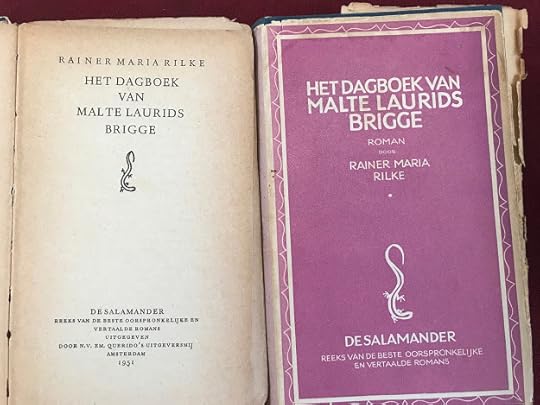
As the Corona virus was dominating the media and everybody’s daily lives, many of my friends on Facebook began launching “book challenges” to entertain themselves and the members of their networks. I accepted a challenge to list “10 books that changed your life,” and soon discovered that it was not just great fun to select ten titles and write about them, but that the exercise triggered a process of self-reflection. It made me conscious of some deep and long-term motivations and obsessions that have very much determined my personal life and my career as a scholar as well (or the other way around?). Here is nr. 4 on my list.
Browsing through my mother's book shelves one afternoon when I was around twenty years old, I came across this small “Salamander” pocket edition of Rainer Maria Rilke’s Aufzeichnungen des Malte Laurids Brigge (1910). My mother’s signature is in it, showing that she herself had bought it in 1956, when she was twenty-eight. If any book ever opened up for me the depth dimension to which great literature can give access, it was this one. I just didn’t know what hit me – this novel was so completely different from anything I had ever read before that I felt like entering an entirely new universe. It took me a very long time to finish Brigge, because I found myself returning again and again to the opening pages and starting over again: no matter how often I read any page, I never felt I had really understood it deeply enough to continue.There was always that sense of a surplus of meaning that kept escaping me, and this remains the case even when I read and re-read it today.
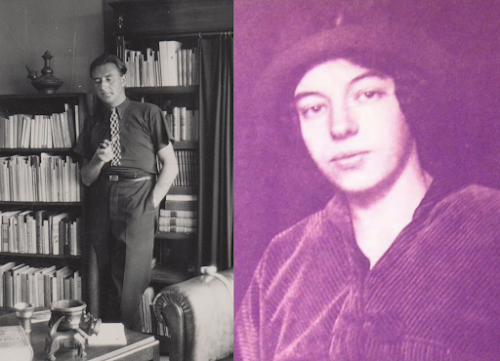 D.A.M. Binnendijk and Nini Brunt
D.A.M. Binnendijk and Nini BruntIt is remarkable that I was not even reading an edition in the original German but a Dutch translation by Dick Adrianus Michael Binnendijk (1902-1984) and Nini Brunt (1891-1984). Strange as it may seem, even today I find their translation at least as good and in some respects perhaps even superior to Rilke’s own German. So who were these people? As it turns out, both were well-known figures in the circles of Dutch literature. Binnendijk was a poet and critic known best for his friendships with important poets such as Menno ter Braak, E. du Perron en Hendrik Marsman, while Nini Brunt was a devoted and extremely productive translator remembered best for her Kafka translations. They were friends and collaborated on other projects as well, including a volume Demonie en droom: Vertellingen der Duitsche Romantiek (Demonism and Dream: Stories of German Romanticism). I very much like their ideas about translation: it was Brunt's opinion that readers should not be able to tell in which language the book had originally been written, and Binnendijk wrote that if one does not write clearly, this means one does not think clearly. Both very true. As it turns out, Binnendijk and Brunt were so confident and skilled that even in the case of a writer of genius, they dared to write what Rilke would have written if Dutch had been his native language. This is obviously risky and could lead to disastrous results in the case of lesser translators, but in their case it was a brilliant success.
Rilke’s novel resonates with me on many levels. Like his protagonist, I too spent a period of my life in Paris living in a single room of my own. As Brigge is wandering the streets, everything he sees and hears enters his mind with incredible intensity, sparking memories and associations that are unlike anything I have ever read anywhere else. Among the many passages that I know almost by heart, the following one in particular may give a clue to why I ended up pursuing the study of “rejected knowledge.”
It is ridiculous. I’m sitting here in my little room, me, Brigge, twenty-eight years old, a total unknown. I’m sitting here and I am nothing. And yet, this nobody starts thinking. And five storeys high, on a grey Paris afternoon, he is thinking these thoughts.
Is it possible, he thinks, that nothing true and important has been seen, recognized or said? Is it possible that one has had thousands of years’ time to look, to think and note down, and that one has allowed these thousands of years to pass by like a school break in which one eats one’s sandwich and an apple?
Yes, it is possible.
Is it possible that in spite of inventions and progress, in spite of culture, religion and worldly wisdom, one has remained on the surface? Is it possible that one has covered this surface, which was still something at least, with some incredibly boring fabric, so that it looks like the room furniture after the holidays?
Yes, it is possible.
Is it possible that the whole of world history has been misunderstood. Is it possible that the past is wrong ... ? ...
Yes, it is possible. ...
Is it possible that all those people have incredibly precise knowledge of a past that has never existed? Is it possible that all realities are meaningless for them; that their life is passing without connection to anything, like a clock in an empty room ?
Yes, it is possible. ...
But if all these things are possible, if they have even just a semblance of possibility, - then for the sake of everything in the world, something must happen. The very first person, he who has these disquieting thoughts, must begin to do something of what has been neglected, whoever he is, no matter how unfit he may be for the task: after all, there is no one else. This young, unimportant stranger, Brigge, five storeys high, will have to start writing, day and night. Yes, he will have to write. That is how it will end.
Formulated in different and more familiar terms: could it be that all our narratives are wrong? As individuals we only know who we are because of the stories we have been told (and keep telling ourselves) about where we have come from. And those stories are embedded in the much larger stories or grand narratives that we tell ourselves about our culture and society. Whether on the individual or the collective level, how we imagine our past determines the limits of who we think we are and what we are able to imagine about the future. So what if we were mistaken all along? What if we somehow missed what was actually most important? What if we were looking just at the surface of reality and never beyond? “Could that be possible?” I must have been asking myself, at some more or less conscious level of awareness, and Rilke gave the answer: “yes, it is possible.”
I do not recall any conscious decision on my own part to follow Brigge’s example, but it cannot be doubted that I did what he did: I started writing. And to tell the truth, as I was pursuing my explorations, I began discovering that what first seemed just a “possibility” turned out to be actually true. I remain convinced of that truth: very important dimensions of reality (I mean historical reality, the reality of human beings as they have traveled through time, stretching from remote antiquity all the way up to this very second in which I am typing these lines) have been overlooked, marginalized, distorted, discredited, mispositioned, in short – misunderstood, not just superficially or just concerning details, but at a fundamental level. At bottom, what this means is very simple: it could all be different. I cannot think of anything more liberating than that.
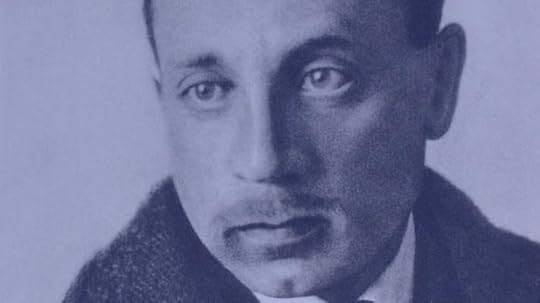
July 11, 2020
The Third Kind: Gilles Quispel and Gnosis
As the Corona virus was dominating the media and everybody’s daily lives, many of my friends on Facebook began launching “book challenges” to entertain themselves and the members of their networks. I accepted a challenge to list “10 books that changed your life,” and soon discovered that it was not just great fun to select ten titles and write about them, but that the exercise triggered a process of self-reflection. It made me conscious of some deep and long-term motivations and obsessions that have very much determined my personal life and my career as a scholar as well (or the other way around?). Number 3: a Dutch collective volume edited by Gilles Quispel.
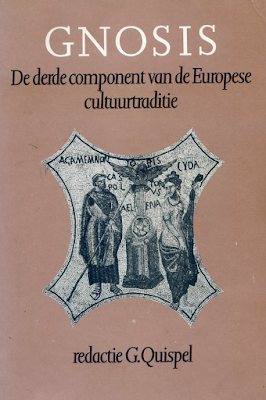 In a list of “ten books that changed my life,” this small Dutch volume cannot go missing – and yet I must confess that I include it with rather mixed feelings. It is not a very good book at all, and I select it only because the title had quite an impact on me. I bought this volume shortly after its publication in 1988, and quickly discovered that its general agenda and approach to the study of “gnostic” currents was quite different from my own. The editor, Gilles Quispel (1916-2006), was impossible to miss for anybody interested in such topics in the Netherlands by the end of the 1980s. He loved giving lectures for large general audiences, made appearances in the media, and was an internationally recognized authority of gnosticism. Of course I contacted him and he was kind enough to invite me to his home. Unfortunately though, we didn’t pull it off. Our personalities turned out to be so antithetical that we began clashing almost immediately, and our intellectual agendas were diametrically opposed. For my part, I wanted critical historical research free from apologetic agendas; for his part, he wanted to use his authority as a university professor to spread the gospel of gnosis. I do not think he would disagree with that assessment – for instance, when Roelof van den Broek and I organized a summer university “Gnosis and Hermeticism from Antiquity to Modern Times” in Amsterdam in 1994, I distinctly remember how he introduced himself during the opening round, not as a scholar or academic but simply as “Gilles Quispel, gnostic.”
In a list of “ten books that changed my life,” this small Dutch volume cannot go missing – and yet I must confess that I include it with rather mixed feelings. It is not a very good book at all, and I select it only because the title had quite an impact on me. I bought this volume shortly after its publication in 1988, and quickly discovered that its general agenda and approach to the study of “gnostic” currents was quite different from my own. The editor, Gilles Quispel (1916-2006), was impossible to miss for anybody interested in such topics in the Netherlands by the end of the 1980s. He loved giving lectures for large general audiences, made appearances in the media, and was an internationally recognized authority of gnosticism. Of course I contacted him and he was kind enough to invite me to his home. Unfortunately though, we didn’t pull it off. Our personalities turned out to be so antithetical that we began clashing almost immediately, and our intellectual agendas were diametrically opposed. For my part, I wanted critical historical research free from apologetic agendas; for his part, he wanted to use his authority as a university professor to spread the gospel of gnosis. I do not think he would disagree with that assessment – for instance, when Roelof van den Broek and I organized a summer university “Gnosis and Hermeticism from Antiquity to Modern Times” in Amsterdam in 1994, I distinctly remember how he introduced himself during the opening round, not as a scholar or academic but simply as “Gilles Quispel, gnostic.” A typical representative of the Eranos perspective, Quispel gave a peculiar twist to Jung’s concept of Gnosticism by reading it through the lens of a very specific Dutch type of Protestant Pietism known as bevindelijkheid. This virtually untranslatable word refers to a deeply conservative Christian tradition that emphasizes an individualized and experiential approach to biblical texts. Quispel loved to speak of gnosis as “knowledge of the heart,” but always made a point of pronouncing it as the bevindelijken did: not as kennis van het hart but in deliberately archaic Dutch as kennisse des harten – a nuance that is bound to escape anyone except a Dutch native speaker familiar with these traditions. It didn’t work for me. I must admit that my instinctive reaction to this type of language has always been similar to how Gershom Scholem reacted to reading Simone Weil, as formulated in a letter to George Lichtheim from 1950:
What attracts me to this very gifted unhappy young woman is the horrible smell of interiority, that … explains why I find Christianity so utterly unbearable. … Of course the swindle of pure interiority, from which may God preserve us, is presented here at a truly impressive pace, and all I can say is “Good for the Jews! as it just so happens that throughout the history of the world they have decidedly refused to take such a direction!” (Briefe II, 16-17)
Of course it wasn't entirely fair for Scholem to read Weil as representative of Christianity in general, but I understand what he means. Looking back at this time when I was in my late twenties and trying to find my way in a new and bewildering terrain, I cannot help wondering about the obscure psychological causes that lead all of us instinctively to say “no” to some things that come our way while saying “yes” to others, quite as instinctively – as in my case to Peuckert’s Pansophie, which (for reasons that I find hard to explain even to myself) strikes me as somehow quite similar to the Jewish perspective that Scholem preferred. Be that as it may, I was certainly making my own choices at the time. While the title of this volume, Gnosis: The Third Component of the European Cultural Tradition, had a decisive impact on the direction I took, its actual contents had an impact on the direction I did not want to take.
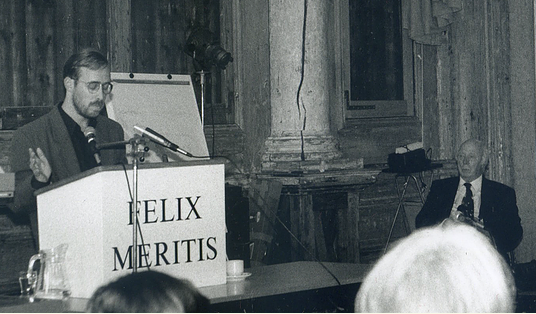 Amsterdam Summer University 1994, me on the left, Quispel sitting on the right
Amsterdam Summer University 1994, me on the left, Quispel sitting on the right
I was fascinated by the simple suggestion that the edifice of Western culture is supported by two pillars, “faith” (notably Christianity) and “reason” (rational philosophy, science) while a third but equally important component had been suppressed, neglected, and basically written out of the history books. Quispel called it “gnosis.” At this time I was mostly interested in music, literature, and all kinds of “alternative” ideas and traditions such as those I encountered in authors like Peuckert or Potok. Since none of it seemed to fit the “faith” and “reason” categories very well, or at all, Quispel’s book title made me wonder whether this mysterious thing called “gnosis” could be a suitable umbrella to cover everything I found so attractive. So that’s the direction I began to explore. I ended up writing a Master thesis in which I attempted to create a systematic typological framework to make sense of the gnosis-reason-faith triad. Bizarre as the combination may sound, I used a type of conceptual analysis that could hardly have been farther removed from Quispel’s Jungian perspective: american analytical philosophy. I had been introduced to it by the theologian Vincent Brümmer, one of my professors at the University of Utrecht, who was using it in a context of Christian-theological apologetics.
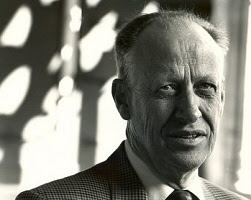 Vincent Brümmer
Vincent BrümmerAlthough I did not share Brümmer’s beliefs at all, I appreciated his intellectual openness to other perspectives than his own and his respect for the power of rational argument. I very well remember how one afternoon, I came out of his class and went straight into another one, where we were reading Merleau-Ponty’s L’oeil et l’esprit. It was as though I stepped from one universe right into another one. Merleau-Ponty struck me as profound but too vague, whereas analytical philosophy was very clear but somehow too superficial. I was looking for clarity because the subjects that attracted me were still quite vague and confusing to me, and so that combination prevailed. The MA thesis led to my first article in english; but I soon abandoned this approach as I found it too clean and artificial for my developing tastes. Under the impact of Jan Platvoet, who was teaching study of religions at the Catholic University of Utrecht, I moved towards what I came to call an empirical-historical approach that began with primary sources rather than theoretical abstractions. But that’s another story.
The bottom line is that Quispel’s title put me on a path that eventually led towards my understanding of esotericism as “rejected knowledge.” I saw that it was all about getting to know those ideas and traditions that had been excluded from mainstream culture due to the ideological and discursive dominance of “faith” and “reason.” Of course, my perspective soon got much more complicated, as it dawned on me that this field of “rejected knowledge” did not consist just of “gnosis” but could also be captured by other and quite different terms of exclusion, such as “paganism,” “idolatry,” “superstition,” “magic,” “the occult,” or simply “the irrational.” Be that as it may, although Quispel was very much an opponent of the entire agenda I stood for, I still owe him a debt of gratitude for coming up with that book title and making me ask the basic question: what is missing from the normative stories that our culture and our educational institutions are telling us? And why is it missing? Those questions kept me busy for more than twenty years, until I finally answered them, to the best of my ability, in my book Esotericism and the Academy (2012).
June 9, 2020
Alterius non sit, qui suus esse potest: Will-Erich Peuckert's Pansophie (2nd ed. 1956)
Sometime during the later 1980s, as a student at the University of Utrecht I was browsing through the library and took a book off the shelf by pure chance, not suspecting that it would send me on a life-long quest. I read the title: Pansophie: Ein Versuch zur Geschichte der weißen und schwarzen Magie (Pansophy: An Attempt at Writing the History of White and Black Magic). What was that all about? Today I think of Peuckert as the true but sadly forgotten pioneer of what we have come to refer to as Western esotericism, and Pansophie as his most attractive book. Here I read for the first time about something called Hermetic Philosophy, and got introduced to Marsilio Ficino, Giovanni Pico della Mirandola, Paracelsus, Jacob Böhme and a large host of lesser figures from the fifteenth through the seventeenth centuries. But it was not the content alone that impressed me so much. Perhaps most of all it was Peuckert’s unique, inimitable style of writing. The book breathed an atmosphere that I found irresistable and that I nowadays recognize as a peculiar kind of German gothic. Peuckert was one of the few specialists of German “folklore” traditions who refused any compromise with the Nazis. As a result, he was deprived of his right to teach, so he withdrew to the countryside and wrote this book in enforced isolation during the first half of the 1930s, as a record of his innere Emigration. He was in fact exploring the true roots of German culture in an attempt to rescue central figures such as Paracelsus or Jacob Böhme from their appropriation by the Nazis. In this regard, Pansophie might be seen as a direct parallel to what Thomas Mann was doing around the same time in his novels Lotte in Weimar (about Goethe) and, most of all, Doktor Faustus (for Mann insiders: Peuckert’s true home is in Kaisersaschern!). Of course the figure of Faust looms large in Pansophie too. I can’t resist translating the final paragraph of the Preface here:
I don’t regret it. I have seen what few others have seen: I have seen Faust and Luther and Weigel and Paracelsus and J. Böhme, the great movers of the German spirit. I have sat with astrologers and spent hours listening to alchemists. I have had the privilege to trace magic as truth. I had the chance to grasp what I considered necessary to grasp; the way of understanding lay wide open before me, and I felt no more restrictions than Paracelsus had once felt in his magic. Just one star stood shining above the road, the one that had shaped his destiny: Alterius non sit, qui suus esse potest. I have been allowed to live beautiful years. I want to be grateful for all those years. For these years, and for this road. It is the only one that fits us. Alterius non sit, qui suus esse potest” [Let he who can belong to himself belong to no other]
Peuckert was grateful for the road, but his later life would be full of tragedy. Having withdrawn to his vacation home in Haasel, in the Silesian Bober-Katzbach Mountains, he had transformed the cow-stable into a library and spent almost all his time reading and writing. But in January 1945, he and his wife had to flee for the advancing Russian troops, and his unique collection of 30.000 volumes would never be recovered. In the Afterword to one of his most important works, Die Grosse Wende, we read these truly heart-breaking words:
This book is a child of pain and misery. … The final sentences … were written in the January days of 1945. Next to the writing desk, prepared for flight into the icy winter, stand the backpacks of two people who have grown old in these days; and each title of each book that is quoted means a farewell to that book.
Two years later, his wife was killed in a car accident that left Peuckert almost completely blind and with heavy head injuries. Nevertheless, somehow he managed to keep writing books. Then in 1960 he lost his son, and in 1963 suffered a stroke that left him largely paralyzed so that he could only type with one finger. And still he kept writing, until a second massive stroke killed him in 1969.
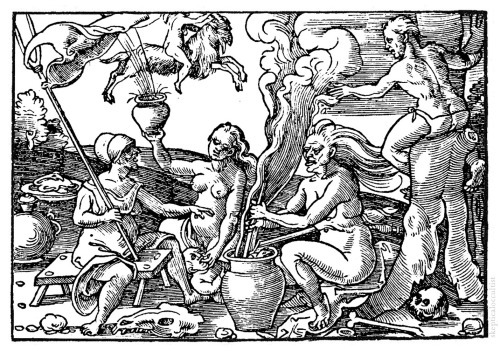 In a previous posting on Creative Reading, I wrote about my discovery of Peuckert’s manuscript “Memories of a Magician.” Another manuscript in the Göttingen collection is clearly autobiographical and full of fascinating observations about what life was like for common people in the countryside during the first half of the twentieth century. Among many other things, it also describes his notorious youthful experiment with the witches’ ointment. As I described in an earlier article about Peuckert, in 1959 he made a passing reference to it in a lecture, resulting in an incredible media hype that ended up making him more famous than all his scholarly work had ever done. In response to continuing media requests, he even accepted to participate in a TV documentary that shows him in the cellar of his own house preparing Della Porta’s witches’ ointment in front of the camera. In the Göttingen manuscript, he describes how he and his buddy (they were about twenty years old at the time) rubbed the ointment on their bodies:
In a previous posting on Creative Reading, I wrote about my discovery of Peuckert’s manuscript “Memories of a Magician.” Another manuscript in the Göttingen collection is clearly autobiographical and full of fascinating observations about what life was like for common people in the countryside during the first half of the twentieth century. Among many other things, it also describes his notorious youthful experiment with the witches’ ointment. As I described in an earlier article about Peuckert, in 1959 he made a passing reference to it in a lecture, resulting in an incredible media hype that ended up making him more famous than all his scholarly work had ever done. In response to continuing media requests, he even accepted to participate in a TV documentary that shows him in the cellar of his own house preparing Della Porta’s witches’ ointment in front of the camera. In the Göttingen manuscript, he describes how he and his buddy (they were about twenty years old at the time) rubbed the ointment on their bodies:I got tired. Clearly tired.But then this tiredness vanished, I don’t know why. All I know is that suddenly I should fly. It was a flying without external props, but somehow I managed. It was as if I had flying membranes between my arms and my body, a bit like bats do – but I did not even need to use those membranes, for in fact some kind of force lifted me up from the podium on which I was standing and I floated through the long hall. Then I moved a bit higher and found myself floating above a forest – not high, and always in danger to hit a treetop.
He finally arrived at a kind of country fair and in the bustle of a wild party. In a kind of dance pavillion he watched women of all ages dancing in wild ecstasy, he mingled with the crowd and felt overtaken by desire, until he was finally embraced by a horrible old witch who suddenly transformed into a woman he knew... But of course, although his experiment with the witches’ ointment caused a sensation, it is in fact just a very minor footnote to Peuckert’s oeuvre. I fully agree with the assessment of Carlos Gilly, perhaps the most important modern specialists in Peuckert’s domain of specialization. Peuckert’s style may not be to everybody’s taste, but as Gilly noted, “Thanks to his immense erudition, which included the most unfamiliar areas of sixteenth- and seventeenth-century literature, Peuckert had such a secure instinct for what was essential, that even with incorrect quotations or insufficient argumentation he was still able to draw conclusions that were essentially correct” (Gilly, "Comenius und die Rosenkreuzer," in: Neugebauer-Wölk, Aufklärung und Esoterik [1999], 95 note 21)
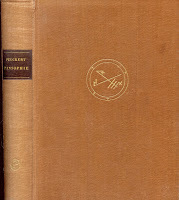 It is worth visiting Peuckert's German Wikipedia page and have a look at his bibliography. This is what scholars were capable of, far before the advent of computers, using typewriters without cut-and-paste options, producing enormous manuscripts that had to be copied manually and then typeset letter by letter! Peuckert's oeuvre includes large biographies of Paracelsus, Copernicus, Jacob Böhme and Sebastian Franck; no less than twenty-four volumes devoted to German intellectual traditions, history and folklore; and on top of that, twenty novels or dramas! An incredible output that has not nearly received the attention it deserves. It is sad how quickly Peuckert was forgotten by German scholars during the seventies, in a climate dominated by Frankfurt School sentiments and their default demonization of all things "irrational" or Romantic. As formulated by Rolf Christian Zimmermann, just “two years after his death [in 1969], the name Will-Erich Peuckert hit … upon an apathetic reserve.”
It is worth visiting Peuckert's German Wikipedia page and have a look at his bibliography. This is what scholars were capable of, far before the advent of computers, using typewriters without cut-and-paste options, producing enormous manuscripts that had to be copied manually and then typeset letter by letter! Peuckert's oeuvre includes large biographies of Paracelsus, Copernicus, Jacob Böhme and Sebastian Franck; no less than twenty-four volumes devoted to German intellectual traditions, history and folklore; and on top of that, twenty novels or dramas! An incredible output that has not nearly received the attention it deserves. It is sad how quickly Peuckert was forgotten by German scholars during the seventies, in a climate dominated by Frankfurt School sentiments and their default demonization of all things "irrational" or Romantic. As formulated by Rolf Christian Zimmermann, just “two years after his death [in 1969], the name Will-Erich Peuckert hit … upon an apathetic reserve.” Well, not with me! It is thanks to Peuckert that I can echo his own words: I have seen what few others have seen, and have had the chance to grasp what I considered necessary to grasp. Like him I am grateful, for the years and for the road. Alterius non sit, qui suus esse potest.
May 6, 2020
Living with Ambiguity: Chaim Potok's The Book of Lights (1981)

Chaim Potok became famous with his best-selling novels The Chosen (1967) and My Name is Asher Lev (1972). I devoured and loved those books when I was young, but undoubtedly it is The Book of Lights that really did it for me. It is not so well known as the others, probably because the central theme is Jewish kabbalah – not such a familiar topic for the general public. Many readers may have found it somewhat difficult to relate to this story and understand what it was really all about, but I have to say that I took to it like a fish to water. It is through this novel that I first became aware of the great kabbalah specialist Gershom Scholem (1897-1982), who appears in the novel as Professor Jacob Keter. Potok presents him as the polar counterpart of an equally great Talmud scholar who goes by the name of Nathan Malkuson: yes, nomina omina sunt, for these are transparent references to the highest and lowest of the ten sefirot (luminous manifestations of divinity) that constitute the kabbalistic “tree of life.” The novel’s hero, Gershon Loran, is a student who falls under Keter’s spell and embarks on the path of becoming a scholar of Jewish esotericism. The novel’s picture of Jacob Keter is so impressive that it became my ideal model of what the scholarly life was supposed to be all about. Basically what happened is that I said to myself: “that’s what I want to be!” As for Gershon Loran, I think I identified with him on several levels, and as I re-read the novel not so long ago, I found that I still do. Central to the narrative – written by a writer born in 1929 who came of age in New York during the later 1940s and the 1950s, the high period of Cold War paranoia – is the mysterious phenomenon of the divine Light of Creation central to kabbalistic mythology. How, Potok was asking himself, does it relate to the Light of Annihilation revealed by the detonation of the atomic bomb? Is it at all possible to determine which one comes from the divine world and which one from the demonic realm, the sita achra? When I visited the quinquennial conference of the International Association for the History of Religion (IAHR) in Japan in 2005, I took The Book of Lights with me and followed Gershon Loran’s trajectory, traveling by high-speed train from Tokyo to Hirosjima. This visit remains one of the strongest impressions of my life. I spent a sunny day in the area where the bomb went off, now known as the “Hiroshima Peace Memorial Park,” surrounded by smiling tourists making pictures while trying to imagine what happened there on 6 August 1945. If by sheer luck you survived at all, how would your mind react to seeing literally everything and everybody around you obliterated, incinerated, utterly wiped away in one single blinding flash of total destruction? I spent hours in the Peace Memorial Museum at the square, feeling sick and exhausted when I finally came out, convinced that any President or PM in control of nuclear weapons should be obliged by law to visit this museum as a condition for taking office. And of course I spent time near the strange saddle-like monument, the Cenotaph, from which Gershon Loran heard a voice from the sita achra whispering to him. For me, Auschwitz and Hiroshima remain the two geographical centers of ultimate demonic horror that demonstrate the evil human beings are capable of. In my mind, the Cenotaph is also linked to Alain Resnais’ great movie Hiroshima mon amour (1959; based on Marguerite Duras). Watching it again after my trip to Tokyo, I realized that the hotel where the French actress and her Japanese lover have their final meeting must be the very same one from which Gershon Loran and his friend Arthur Leiden see the Cenotaph too.
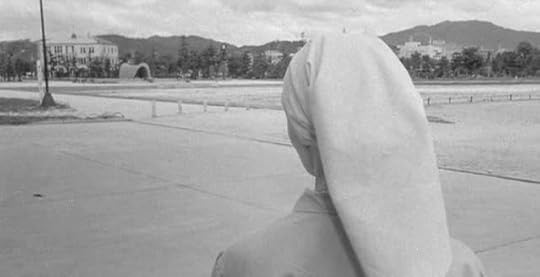 Still from Hiroshima Mon Amour (Alain Resnais, 1959)
Still from Hiroshima Mon Amour (Alain Resnais, 1959)There are many passages in The Book of Lights that I love, and some of them I know almost by heart. A great favourite is the extraordinary account of Gershon Loran’s oral exam with Keter, during a long walk along Riverside Drive. Gershon drifts into a hallucinatory altered state, watching a numinous white bird circling above the water while listening as if from a distance and in a dream how he and Keter go through centuries of kabbalistic myths and imagery. But I will quote a conversation in Japan with his friend Arthur Leiden, the son of a great physicist who is tormented by the knowledge that his own father helped create the bomb and unleash the death light. Arthur asks Gershon why on earth he is so attracted by those weird kabbalistic books.
Weird? Maybe. Those books are really records of the religious imagination, Arthur. When I was a kid I once went up to the roof of our apartment house in Brooklyn and looked up at the stars. I remember I raised my hands in supplication – a little like the gesture of the monkey we saw today on the road. I felt something touch me. Oh yes, something touched me. I’ve been waiting to feel that touch again. Is that childish of me? This is, after all, the twentieth century. But sometimes when I read those texts I’m on the roof of that building again. I don’t know why I feel that way. They say things in those books that no one dares to say anywhere else. I feel comfortable with those acceptable heresies. God originally as sacred emptiness; ascents to God that are filled with danger, as if you were going through an angelic minefield; creation as a vast error; the world broken and dense with evil; everything a bewildering puzzle; and the sexuality in some of the passages. I like the sexuality. I especially like the ambiguities. Wow, Arthur, listen to me go. I’m saying more to you tonight than I did during all our seminary years. That is really good wine. Where was I? Yes. Ambiguities. You can’t pin most of it down the way you can a passage of Talmud. I can live with ambiguity, I think, better than I can with certainty.
I suppose that it was while reading this passage that I realized this to be true for myself as well. Gershon Loran came from an orthodox Jewish background while I was raised as the son of a Protestant minister; and both religious cultures were teaching their members to understand the world in terms of clear doctrinal certainties. Much too two-dimensional for my taste – reality couldn’t possibly be that simple. I felt more comfortable with the heretics, those who do not follow authorities but “make their own choices.” I still do.
 The original bomb on Hiroshima
The original bomb on HiroshimaChaim Potok's The Book of Lights (1981)

Chaim Potok became famous with his best-selling novels The Chosen (1967) and My Name is Asher Lev (1972). I devoured and loved those books when I was young, but undoubtedly it is The Book of Lights that really did it for me. It is not so well known as the others, probably because the central theme is Jewish kabbalah – not such a familiar topic for the general public. Many readers may have found it somewhat difficult to relate to this story and understand what it was really all about, but I have to say that I took to it like a fish to water. It is through this novel that I first became aware of the great kabbalah specialist Gershom Scholem (1897-1982), who appears in the novel as Professor Jacob Keter. Potok presents him as the polar counterpart of an equally great Talmud scholar who goes by the name of Nathan Malkuson: yes, nomina omina sunt, for these are transparent references to the highest and lowest of the four sefirot (luminous manifestations of divinity) that constitute the kabbalistic “tree of life.” The novel’s hero, Gershon Loran, is a student who falls under Keter’s spell and embarks on the path of becoming a scholar of Jewish esotericism. The novel’s picture of Jacob Keter is so impressing that it became my ideal model of what the scholarly life was supposed to be all about, and so I said to myself: “that’s what I want to be!” As for Gershon Loran, I think I identified with him on several levels, and as I re-read the novel not so long ago, I found that I still do. Central to the narrative – written by a writer born in 1929 who came of age in New York during the later 1940s and the 1950s, the high period of Cold War paranoia – is the mysterious phenomenon of the divine Light of Creation central to kabbalistic mythology. How, Potok was asking himself, does it relate to the Light of Annihilation revealed by the detonation of the atomic bomb? Is it at all possible to determine which one comes from the divine world and which one from the demonic realm, the sita achra? When I visited the quinquennial conference of the International Association for the History of Religion (IAHR) in Japan in 2005, I took The Book of Lights with me and followed Gershon Loran’s trajectory, traveling by high-speed train from Tokyo to Hirosjima. This visit remains one of the strongest impressions of my life. I spent a sunny day in the area where the bomb went off, now known as the “Hiroshima Peace Memorial Park,” surrounded by smiling tourists making pictures while trying to imagine what happened there on 6 August 1945. If by sheer luck you survived at all, how would your mind react to seeing literally everything and everybody around you obliterated, incinerated, utterly wiped away in one single blinding flash of total destruction? I spent hours in the Peace Memorial Museum at the square, feeling sick and exhausted when I finally came out, convinced that any President or PM in control of nuclear weapons should be obliged by law to visit this museum as a condition for taking office. And of course I spent time near the strange saddle-like monument, the Cenotaph, from which Gershon Loran imagined the sita achra whispering to him. For me, Auschwitz and Hiroshima remain the two geographical centers of ultimate demonic horror that demonstrate the evil human beings are capable of. In my mind, the Cenotaph is also linked to Alain Resnais’ great movie Hiroshima mon amour (1959; based on Marguerite Duras). Watching it again after my trip to Tokyo, I realized that the hotel where the French actress and her Japanese lover have their final meeting must be the very same one from which Gershon Loran and his friend Arthur Leiden see the Cenotaph too.
 Still from Hiroshima Mon Amour (Alain Resnais, 1959)
Still from Hiroshima Mon Amour (Alain Resnais, 1959)There are many passages in The Book of Lights that I love, and some of them I know almost by heart. A great favourite is the extraordinry account of Gershon Loran’s oral exam with Keter, during a long walk along Riverside Drive. Gershon drifts into a hallucinatory altered state, watching a numinous white bird circling above the water while listening as if from a distance and in a dream how he and Keter go through centuries of kabbalistic myths and imagery. But I will quote a conversation in Japan with his friend Arthur Leiden, the son of a great physicist who is tormented by the knowledge that his own father helped create the bomb and unleash the death light. Arthur asks Gershon why on earth he is so attracted by those weird kabbalistic books.
Weird? Maybe. Those books are really records of the religious imagination, Arthur. When I was a kid I once went up to the roof of our apartment house in Brooklyn and looked up at the stars. I remember I raised my hands in supplication – a little like the gesture of the monkey we saw today on the road. I felt something touch me. Oh yes, something touched me. I’ve been waiting to feel that touch again. Is that childish of me? This is, after all, the twentieth century. But sometimes when I read those texts I’m on the roof of that building again. I don’t know why I feel that way. They say things in those books that no one dares to say anywhere else. I feel comfortable with those acceptable heresies. God originally as sacred emptiness; ascents to God that are filled with danger, as if you were going through an angelic minefield; creation as a vast error; the world broken and dense with evil; everything a bewildering puzzle; and the sexuality in some of the passages. I like the sexuality. I especially like the ambiguities. Wow, Arthur, listen to me go. I’m saying more to you tonight than I did during all our seminary years. That is really good wine. Where was I? Yes. Ambiguities. You can’t pin most of it down the way you can a passage of Talmud. I can live with ambiguity, I think, better than I can with certainty.
I suppose that it was while reading this passage that I realized this to be true for myself as well. Gershon Loran came from an orthodox Jewish background while I was raised as the son of a Protestant minister; and both religious cultures were teaching their members to understand the world in terms of clear doctrinal certainties. Much too two-dimensional for my taste – reality couldn’t possibly be that simple. I felt more comfortable with the heretics, those who do not follow authorities but “make their own choices.” I still do.
 The original bomb on Hiroshima
The original bomb on HiroshimaMarch 30, 2020
In Search of Humanity: Reading Thomas Mann

Ein Zweifler bin ich, wie ich hier sitze, nicht weil ich nichts glaubte, sondern weil ich alles für möglich halte (A doubter I am, as I sit here – not because I believed in nothing but because I hold that anything is possible). Joseph und seine Brüder, vol. 3, “Zum Herrn”.
Two years ago I embarked on a life's mission. Spread out over the next x-number of years, I decided to read my way through all 38 volumes, including commentary volumes, of the Grosse Kommentierte Frankfurter Ausgabe (GKFA) of the complete works of Thomas Mann. Simply because no other writer gives me so much pleasure and so many insights, or is so close to how I look at the world. After each volume I wrote some short reflections on my personal Facebook page; below you can find those thoughts in an edited and slightly expanded version.Looking at Mann’s oeuvre as a whole, I cannot help perceiving a grand life-long design of the kind you find only in the very greatest creative minds. Thomas Mann began right at home, with a novel (Buddenbrooks) about Lübeck and the German bourgeois milieu in which he had grown up. In Königliche Hoheit, the scope was somewhat broadened to a fictional duchy, symbolic not of Germany but of Mann’s personal “kingdom of the spirit.” Then in Der Zauberberg the scope was widened from Germany all the way to Europe as a whole, and its spiritual condition right before the disaster of World War I. So what could be next – the whole world? In fact what followed was an enormous four-volume novel (a counterpart to Wagner’s Ring des Nibelungen?) about Humanity as such; and it seems significant that this time its mythical representatives and central heroes, the biblical figures Jacob and Joseph, were not Germans but Jews. Only having made his ultimate statement about die Menschlichkeit did Mann return to writing about Germany. His first step was to address yet another myth, that of Goethe (Lotte in Weimar). And after that he delved deep into the abyss of mourning about the German culture that he loved, and its spiritual suicide under Hitler and the Nazis (Doktor Faustus). Thus having made a movement full circle, but not wishing to end in despair, after the war Mann published a light-hearted yet serious epilogue to his oeuvre. Der Erwählte was a brilliant meditation on guilt and redemption, again with human-more-than-human heroes who no longer reflected his own German Protestant roots but the universal aspirations of Catholic culture. So was it all deliberately planned like this? I rather think it was instinctive and not necessarily conscious – “wenn ich selbst es gedacht habe, so war es mehr und weniger als Denken” (if I thought this myself, it was more and less than thinking).
Volume 1: Buddenbrooks
I actually had not read Buddenbrooks before, strange as it may seem. Initially it was just a fantastic experience to get to know this family up close, most of all Tony Buddenbrook (who nevers seems to stop throwing her head backwards while simultaneously trying to put her chin on her breast... reminding me of Professor McGonagall). The novel is beautifully written, great literature, and the characters will remain part of my inner world forever - and yet... some part of me (spoiled no doubt by his later work) thought "well, this was Mann’s first full novel, it may have gotten him the Nobel prize because it was such a popular success, but perhaps it doesn't yet show us Thomas Mann at the full height of his powers."
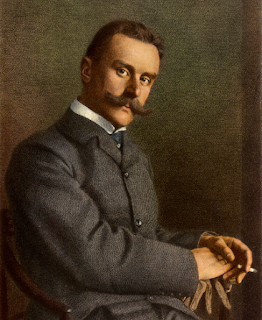 Well, so I though at first. And there might even be some grain of truth to it in comparison with the very best of his later work. Yet, the characters began to grow on my mind in a strange way, and I ended up reading Buddenbrooks all over again. As I could have known, the experience confirmed what I already knew: if you have read a Thomas Mann novel just one single time, you have barely read it at all. Only at repeated reading does his work begin to reveal its secrets. The chacteristic Mannian irony that I thought was somewhat missing or at least less evident turned out to be omnipresent throughout the book – somehow I must have been so busy focusing on other aspects that I missed it. The personalities particularly of Tony, Thomas and Hanno became fully three-dimensional, and I began to notice various layers of meaning and significance that had partly or completely passed me by: for instance the nature of the process of “decadence” or “decline” in both the family and the wider cultural environment, the inner conflict of Thomas between his public role and the deeper longings of his soul (coming to the surface most clearly when he reads Schopenhauer’s masterpiece Die Welt als Wille und Vorstellung, which had been the strongest reading experience of Thomas Mann’s own youth), and Hanno as the family member who exemplifies the ambiguous Todestrieb that, paradoxically, is the motor of Mann’s inspiration as a writer. Was ist das? Tony asks at the very beginning – and in the final lines we find the statement Es ist so! I suspect that the initial question refers to the world in which Thomas Mann was born and raised, and the entire novel gave the answer: so this is how it was, this was the truth!
Well, so I though at first. And there might even be some grain of truth to it in comparison with the very best of his later work. Yet, the characters began to grow on my mind in a strange way, and I ended up reading Buddenbrooks all over again. As I could have known, the experience confirmed what I already knew: if you have read a Thomas Mann novel just one single time, you have barely read it at all. Only at repeated reading does his work begin to reveal its secrets. The chacteristic Mannian irony that I thought was somewhat missing or at least less evident turned out to be omnipresent throughout the book – somehow I must have been so busy focusing on other aspects that I missed it. The personalities particularly of Tony, Thomas and Hanno became fully three-dimensional, and I began to notice various layers of meaning and significance that had partly or completely passed me by: for instance the nature of the process of “decadence” or “decline” in both the family and the wider cultural environment, the inner conflict of Thomas between his public role and the deeper longings of his soul (coming to the surface most clearly when he reads Schopenhauer’s masterpiece Die Welt als Wille und Vorstellung, which had been the strongest reading experience of Thomas Mann’s own youth), and Hanno as the family member who exemplifies the ambiguous Todestrieb that, paradoxically, is the motor of Mann’s inspiration as a writer. Was ist das? Tony asks at the very beginning – and in the final lines we find the statement Es ist so! I suspect that the initial question refers to the world in which Thomas Mann was born and raised, and the entire novel gave the answer: so this is how it was, this was the truth!Volume 2: Early Stories (1893-1912)
These twelve early stories are all about loss, disappointment, unattainable ideals, and dark impulses. They all end badly. All are beautifully written, but I found that only in “Der kleine Herr Friedemann” the spark of genius first breaks through all of a sudden. Then, with the brilliant novella “Tonio Kröger,” for the first time we see the protagonist overcoming his disgust with the bourgeois “normality” of common human beings. The writer – the man of Spirit (Geist) whose soul is secretly in league with the dark powers of nihilism, illness and death – admits his desperate although unrequited love for the health and happiness of simple human joy and life-affirmation. In “Tristan” – a tour de force in its combination of deep tragedy with farcical humour – a somewhat similar man of letters suffers a humiliating defeat. He is faced down by the healthiest baby of all healthy babies in world literature, named Klöterjahn, who gets his jubilant revenge for the Wagnerian love-death that the writer has egoistically inflicted on his mother. From there on, we see Thomas Mann continuing his life project of making friends with life: henceforth other enemies of humanity in the name of Art fare no better under his pen (think for instance of the Stefan Georgian / Ludwig Klagesian apocalypticist of “Beim Propheten”, or the Kridwiß circle in Doktor Faustus). Finally the cycle ends with Mann’s famous and truly breathtaking short novel “Der Tod in Venedig,” grounded in the profound Platonic connection (Phaedrus, Symposium) between death and beauty, transcendence and truth, and hence in the deep moral ambiguity (Fragwürdigkeit) of literature situated in the midst of Life.Does that sound too abstract? Perhaps, but I won’t explain. You must read it yourself.
Volume 3: Fiorenza etcetera
In the great Frankfurt edition of Thomas Mann’s complete works, this volume is quite slim – in fact the companion volume with introductions and commentaries has more than twice its length. It is devoted to genres that Thomas Mann had been trying out but in which, as it turned out, he did not truly excel: theatre, poetry, and even a film script. Most important by far is his drama “Fiorenza” (1905), and it came as a complete surprise for me that among its dramatic characters are two of my favourites: the great Renaissance philosophers Marsilio Ficino and his contemporary Giovanni Pico della Mirandola. However, the central protagonists are Lorenzo de’ Medici and Girolama Savonarola, who represent two poles of the inner conflict at the heart of Mann’s mind and soul. Lorenzo stands for the “pagan” perspective of life-affirming sensual beauty in Renaissance art, whereas Savonarola stands for its ascetic counterpart based on the spiritual superiority of the Word (Geist and literature) over Nature and the World. Is the deepest motivation of literature a barely conscious wish to transcend life itself and overcome the world of the senses? If so, does this mean that the writer is secretly on the side of death? But then doesn’t this ultimately make him an enemy of humanity at heart, even though he poses as its friend? Is beauty ultimately deadly, like the flame that consumes the moth? If the true writer pierces through the exterior surface of things and gains knowledge of the truth, is such knowledge really a blessing? Isn’t it rather a curse, for isn’t the price of knowledge just too high? Shouldn’t the innocence that comes with ignorance be preferred over the painful knowledge of the man who has freed himself from illusions, as suggested by the Grand Inquisitor in Dostoyewsky’s great story (or if you want a contemporary parallel, the character of Cypher in The Matrix)?
 These existential questions are basic to Thomas Mann’s oeuvre as a whole. They reflect his life-long struggle to define the true heart of humanity (die Humanität), with all its deep moral and political implications, from “Tristan” and “Death in Venice” to Der Zauberberg and Doktor Faustus. The writer may not be a very nice person – think also of Felix Krull, discussed below – but then again, is it his job to be nice? Isn’t his job rather to tell the truth? In Fiorenza the battle is undecided. Critics have tried to decide whether Lorenzo or Savonarola represents Thomas Mann’s own perspectice, and Mann himself has admitted that the friar might ultimately be closest to him; but in the end, it seems to me, making an either/or choice means missing the whole point. Two souls were living in Mann’s breast, and precisely their incompatibility made them fit ingredients for transmutation into great art. “I love the fire” are Savonarola’s final words.
These existential questions are basic to Thomas Mann’s oeuvre as a whole. They reflect his life-long struggle to define the true heart of humanity (die Humanität), with all its deep moral and political implications, from “Tristan” and “Death in Venice” to Der Zauberberg and Doktor Faustus. The writer may not be a very nice person – think also of Felix Krull, discussed below – but then again, is it his job to be nice? Isn’t his job rather to tell the truth? In Fiorenza the battle is undecided. Critics have tried to decide whether Lorenzo or Savonarola represents Thomas Mann’s own perspectice, and Mann himself has admitted that the friar might ultimately be closest to him; but in the end, it seems to me, making an either/or choice means missing the whole point. Two souls were living in Mann’s breast, and precisely their incompatibility made them fit ingredients for transmutation into great art. “I love the fire” are Savonarola’s final words.Volume 4: Royal Highness
This is the least known of Mann’s novels, and it is often seen as somewhat weaker. Yet ThomasMann himself has always defended it against hostile critics, calling it a crucial work in his oeuvre without which Der Zauberberg and Joseph und seine Brüder would have been unthinkable. Among the great things of the GKFA is that the commentary volumes provide extensive overviews of the critical reception history of each work; and I have to agree with Thomas Mann that as far this novel is concerned, many critics seem to have suffered from a peculiar lack of literary sensitivity, simple intelligence, ideological blindness, or some combination of all of these. Königliche Hoheit (Royal Highness) is a wonderful modern fairy tale, clearly driven by the experience of Mann’s own marriage with the daughter of a millionaire, Katia Pringsheim.
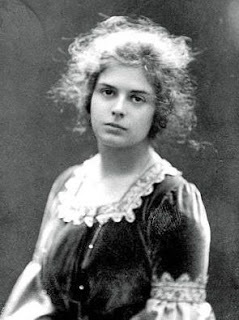 The lonely prince of a small and badly impoverished duchy, condemned to an isolated existence of purely ceremonial “representation” that never allows him to show who he really is, falls in love with the equally isolated daughter of an American billionnaire; and as he marries her, he finds salvation not just for himself but for his kingdom as well. Of course the metaphor is rather obvious. Thomas Mann’s early stories and his first novel Buddenbrooks all end badly, but this one finishes like fairy tales do: they go on to live happily ever after. Critics who saw that as just a bit too shallow and predictable seem to have missed much of what is great about Königliche Hoheit, such as its sensitive analysis of extremely delicate inner states; the psychology of power and authority; the tension between political necessity and individual spontaneity; the subconscious resentment against whatever is “higher” (the urge to pull it down to one’s own level); the experience of loneliness pure and simple; the nature of friendship; and last but not least, the adventure of falling in love. And then of course there is always that glorious language – the most beautiful German ever written by anyone ever, as far as I’m concerned. What a writer!
The lonely prince of a small and badly impoverished duchy, condemned to an isolated existence of purely ceremonial “representation” that never allows him to show who he really is, falls in love with the equally isolated daughter of an American billionnaire; and as he marries her, he finds salvation not just for himself but for his kingdom as well. Of course the metaphor is rather obvious. Thomas Mann’s early stories and his first novel Buddenbrooks all end badly, but this one finishes like fairy tales do: they go on to live happily ever after. Critics who saw that as just a bit too shallow and predictable seem to have missed much of what is great about Königliche Hoheit, such as its sensitive analysis of extremely delicate inner states; the psychology of power and authority; the tension between political necessity and individual spontaneity; the subconscious resentment against whatever is “higher” (the urge to pull it down to one’s own level); the experience of loneliness pure and simple; the nature of friendship; and last but not least, the adventure of falling in love. And then of course there is always that glorious language – the most beautiful German ever written by anyone ever, as far as I’m concerned. What a writer!Volume 5: The Magic Mountain
This was perhaps the fifth or sixth time I read Thomas Mann’s Zauberberg. Although there are few novels I know so well, it’s the mark of supreme literature that the book managed to utterly surprise me all over again! Somehow, for some reason, never before did I experience the story so intensely and so vividly with all five senses; never before was I able to imagine the physical and emotional situations and interactions so concretely and in so much human and psychological detail; and I had to admit to myself, with some embarrassment, that many of this novel’s deeper emotional and intellectual subtleties had remained completely hidden to me and revealed themselves now for the very first time. It is also the first time that I read the novel not primarily as a metaphor of the intellectual, social, and political situation of Europe before World War I (with Settembrini and Naphta famously fighting over the soul of Hans Castorp, this Sorgenkind des Lebens who has to find his way between the alternatives of liberal humanitarian progressivism and its illiberal authoritarian and reactionary counterpart) but, first and foremost, as a great “hermetic-alchemical” love story about personal transformation through suffering and acceptance.
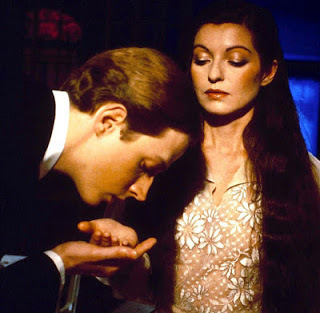 The novel is even shaped like a mountain. The first part reaches its culmination exactly halfway, in the “Walpurgisnight” chapter, where Hans experiences his witches’ sabbath on top of the mountain with Clawdia Chauchat. After he has fallen under her spell forever, we move downward (while the flow of time keeps slowing down…) until Chauchat returns in the company of Mynheer Peeperkorn, culminating in the chapter where the three members of this love triangle seal their pact of mutual solidarity. Meanwhile Hans Castorp learns deep lessons about the relation between spirit and body, body and illness, illness and life, life and death, and death and love, culminating in an initiatic death and rebirth experience surrounded by literally deadly mountains of snow and ice. But his adventure of transmutation on the magic mountain, hermetically isolated from the course of history that carries on in the “flatland” below, ends when the alchemical vessel is shattered with a huge blow and Hans finds himself face to face with imminent physical death on the battlefield of the Great War. Only a little bit better prepared, perhaps, than he would otherwise have been.There are many other great novels, and some of them were written by Thomas Mann too, but there is no other novel like this. It remains a unique phenomenon, and although I feel as though I have understood it more deeply than ever before, it’s very likely that many of its secrets still did not reveal themselves to me this time around. I’m not yet done with this book. Or perhaps the book is not yet done with me.
The novel is even shaped like a mountain. The first part reaches its culmination exactly halfway, in the “Walpurgisnight” chapter, where Hans experiences his witches’ sabbath on top of the mountain with Clawdia Chauchat. After he has fallen under her spell forever, we move downward (while the flow of time keeps slowing down…) until Chauchat returns in the company of Mynheer Peeperkorn, culminating in the chapter where the three members of this love triangle seal their pact of mutual solidarity. Meanwhile Hans Castorp learns deep lessons about the relation between spirit and body, body and illness, illness and life, life and death, and death and love, culminating in an initiatic death and rebirth experience surrounded by literally deadly mountains of snow and ice. But his adventure of transmutation on the magic mountain, hermetically isolated from the course of history that carries on in the “flatland” below, ends when the alchemical vessel is shattered with a huge blow and Hans finds himself face to face with imminent physical death on the battlefield of the Great War. Only a little bit better prepared, perhaps, than he would otherwise have been.There are many other great novels, and some of them were written by Thomas Mann too, but there is no other novel like this. It remains a unique phenomenon, and although I feel as though I have understood it more deeply than ever before, it’s very likely that many of its secrets still did not reveal themselves to me this time around. I’m not yet done with this book. Or perhaps the book is not yet done with me.Volume 6: The Later Stories
Having finally completed his massive political essay Betrachtungen eines Unpolitischen in 1918, Mann felt a deep need to escape mentally from the horrors of World War I, from polemics and public attacks, from politics, and from essay-writing as well. He must have been longing for peace and innocence, and so what did he write about now? His dog Bauschan and his newborn baby daughter Elisabeth! These delightful idylls are all about simple life and love, but their author would not be Thomas Mann if they had not also contained some deep reflections on the mystery of suffering, our complicity in causing it, and our helplessness to relieve it. Then, in 1930, “Mario and the Magician”: the rise of Italian fascism captured in a story about a stage hypnotist performing for the summer guests in a beach resort. It is really all about ruthless psychological manipulation and the exploitation of mob cruelty (spoiler: the dictator dies). In the slipstream of Joseph and his Brothers, we read two further exercises in what might be called its central theme, the humanization of myth through literature. One rather gruesome story is placed in India, and is all about the relation between mind and body and between eros and transcendence. The other is a remarkably funny re-telling of the story of Moses and the Ten Commandments. And then finally, at the end of volume six, I had my very first experience of being just a tiny bit disappointed (dare I say bored?) by Thomas Mann. That’s a rare occurrence. “Die Betrogene”was written towards the end of his life, and you can tell that Mann’s powers were waning. In fact the story was a struggle for him to finish, as he admitted that the main characters left even him a bit cold, and the dialogues between mother and daughter were frankly too unrealistic. No matter, even the greatest writer is entitled to his moment of weakness…
Volume 7-8: Joseph and his Brothers
It took a long time before I was ready for this novel. Years ago I started it, but didn’t finish – somehow I got stuck or got lost in the scene where Joseph overhears the conversation between Potiphar’s parents, so I put the book away. For me as for so many other readers, Thomas Mann remained primarily the author of The Magic Mountain and Doktor Faustus. Why write about biblical figures if you can write about the modern world?But then in the summer of 2018 I took the book with me on vacation through Germany. This time I really allowed myself the time for my mind to adapt to the slow but majestic rhythm of those long and wonderful sentences, beginning with the opening words: Tief ist der Brunnen der Vergangenheit. Sollte man ihn nicht unergründlich nennen? (Deep is the Well of the Past. Shouldn’t we call it unfathomable?) – perhaps the ultimate statement of how I experience history and historicity, as a numen, a coincidentia oppositorum of contingency and human meaning. Now I realize that this was Thomas Mann’s perspective too.
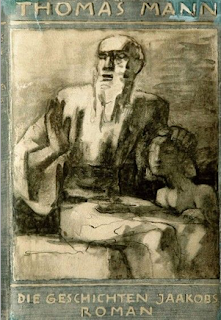 About a book like this, one should be either very expansive or very short, so for now I’ll have to stay with the latter. Since that summer of 2018, Joseph und seine Brüder stands lonely at the very top of my list of “best novels ever.” I know nothing like it. As suggested in the introduction to this overview, I see it as Mann’s ultimate story about humanity, die Menschlichkeit – a mythical account of perhaps even greater ultimate concern than his great works about supremely important historical topics such as World War I and the fate of Europe’s soul (Der Zauberberg) and World War II and the suicidal devil’s pact of German culture (Doktor Faustus). This story about Jacob and his beloved Rahel, Joseph and his troublesome brothers, their wives and their families, the archetypal encounter between Israel and Egypt, the One God of Jacob and Akhnaton against the many gods of Egyptian tradition, deep mourning and despair as well as unhoped-for deliverance, exile and return, providential mystery and wild adventure, and so much more – all of this, woven into one incredible complex composition that never loses its coherence, becomes Mann’s ultimate statement about what it means to be human. Hence the painful contrast with the story that came right after, about Andrian Leverkühn and what it means to be inhuman. If Wagner wrote his Ring des Nibelungen in four parts, grounded in German mythology and admired by Hitler, Mann responded with his own four-part tetralogy grounded in the foundational myth of the same people that Hitler sought to destroy. The parallels and contrasts are deep and troubling. Mann admired Wagner and saw music as the deepest language through which the soul could express itself directly; but over against its dark and primal powers stood literature, the medium of the spirit (Geist) with its promise of redemption through the Word (Logos). If any book will ever convince us that such redemption is possible, then this is it.
About a book like this, one should be either very expansive or very short, so for now I’ll have to stay with the latter. Since that summer of 2018, Joseph und seine Brüder stands lonely at the very top of my list of “best novels ever.” I know nothing like it. As suggested in the introduction to this overview, I see it as Mann’s ultimate story about humanity, die Menschlichkeit – a mythical account of perhaps even greater ultimate concern than his great works about supremely important historical topics such as World War I and the fate of Europe’s soul (Der Zauberberg) and World War II and the suicidal devil’s pact of German culture (Doktor Faustus). This story about Jacob and his beloved Rahel, Joseph and his troublesome brothers, their wives and their families, the archetypal encounter between Israel and Egypt, the One God of Jacob and Akhnaton against the many gods of Egyptian tradition, deep mourning and despair as well as unhoped-for deliverance, exile and return, providential mystery and wild adventure, and so much more – all of this, woven into one incredible complex composition that never loses its coherence, becomes Mann’s ultimate statement about what it means to be human. Hence the painful contrast with the story that came right after, about Andrian Leverkühn and what it means to be inhuman. If Wagner wrote his Ring des Nibelungen in four parts, grounded in German mythology and admired by Hitler, Mann responded with his own four-part tetralogy grounded in the foundational myth of the same people that Hitler sought to destroy. The parallels and contrasts are deep and troubling. Mann admired Wagner and saw music as the deepest language through which the soul could express itself directly; but over against its dark and primal powers stood literature, the medium of the spirit (Geist) with its promise of redemption through the Word (Logos). If any book will ever convince us that such redemption is possible, then this is it.Volume 9: Lotte in Weimar
It took me quite some time to finish Lotte – or rather, I finished it twice. I will hardly have been the first Thomas Mann reader to experience some trouble getting through this novel, which feels somehow different from all the others and may be less immediately appealing. Have reached the end, I was not satisfied. I did not really know what to make of the novel, but my admiration for Mann was much too great for me to assume that the failure lay with him. So I started again, making good use of the introductions & commentaries in the GKFA. Lo and behold: the novel did begin to open up to me, and now I am sure that some day I will return to it again. One thing that makes the book difficult to appreciate for contemporary readers is that it responds to a phenomenon which is rather hard for us to imagine today: the pre-World War II "Goethe cult" in Germany and its appropriation by the Nazis, who were trying to claim Goethe for themselves and present him as the supreme semi-divine "Aryan Genius" who represented the superiority of German culture. Thomas Mann (who famously spoke the words "where I am, there is Germany” one year before Lotte got published) felt a need to come to terms with Goethe, his main competitor for the position of the most representative literary writer of German culture.
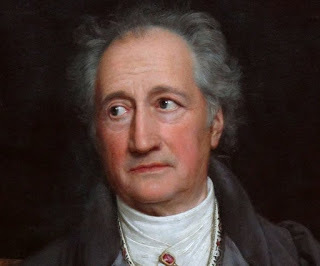 Mann’s respect for Goethe was very great, and his knowledge of his work impressive, but Lotte in Weimar is a deliberate attempt (like the Joseph tetralogy) "den Mythos den Fascistischen Dunkelmännern aus den Händen zu nehmen und ihn ins Humane 'umzufunktionieren'" – to wrest Myth out of the hands of the fascist obscurantists and humanize it. That is exactly what happens in this Goethe novel. Charlotte Kestner is the real-life model of the young woman, also named Lotte, with whom Werther fell in love in Goethe's famous first novel Die Leiden des jungen Werthers – the archetypal story of unrequited passion that was known to every German school child. She is now over sixty years old and returns to Weimar to visit her family. She hopes to use the opportunity of visiting her one-time admirer, now an old man and an international celebrity of mythical dimensions. Most of the novel consists of very long conversations that all circle imaginatively around The Great Man, who himself does not appear until the seventh chapter, a very long monologue intérieur that gives us the uncensored Goethe “from within.” Then in chapter eight, when Charlotte is finally introduced to him, we get to see Goethe “from without”: the old and stiff celebrity who brilliantly plays his social role but never for a moment leaves room for even a moment of intimacy, to Charlotte's deep disappointment. Only in the final chapter do Charlotte and Goethe get to talk the way she had been hoping – but it happens in a dreamlike vision that straddles the boundaries between the world of the living and the world of the dead. Re-reading the novel, it became clear to me that these final two chapters in particular are masterpieces; and again I realized that like all the great novels that Mann has written, Lotte too needs to be read at least twice. The extremely detailed commentaries helped me realize that while this novel may be less appealing for general readers less familiar with Goethe, it is in fact a tour de force in which Mann plays on a whole series of registers, revealing many levels of meaning where at first one seems to see just one. The basic problem of myth versus reality was very well known to Mann himself. The writer creates works of the imagination, and if these are works of genius that have great appeal, then one effect is that the writer himself takes on mythical dimensions that conflict with the much more humbling realities of himself as just another human being. For instance, the chapter that gives us Goethe's inner life – the “writer’s workshop” behind the surface of the public oeuvre – does a very thorough job of demystification. The Nazis and other readers eager to heroicize Goethe will have been properly horrified to see that the Great Man wakes up with an erection caused by the dream of a mythological painting, and is congratulating himself in his solitude on the fact that at his age he can still “do it.” That passage is of course mostly humorous; but reading it in our present moment (as we see too many great artists, along with their entire oeuvre, "canceled" or "de-platformed" for no other reason than the fact that they are flawed human beings like the rest of us) it all adds up to a salutary reminder of our common humanity: no matter how annoying and unsympathetic a person may be in actual life, that doesn't mean he cannot also be an utterly brilliant and profound thinker, speaker, and writer who deserves our admiration for his work. Lotte succeeds in the subtle balancing act of demythologizing Goethe while preserving his greatness – a thoroughly humanistic enterprise that obviously reflects back on how Thomas Mann would like to see himself as well. Our inner world may not be politically correct, but it is the honest truth, and it is ours. By contrast, the pleasant and acceptable person we like to present to the world may be just a lie and a deception through which we sell ourselves to others. If one puts it like this, one sees how deeply this pattern runs through the whole of Mann’s oeuvre, from Thomas Buddenbrook through Goethe all the way to Felix Krull.
Mann’s respect for Goethe was very great, and his knowledge of his work impressive, but Lotte in Weimar is a deliberate attempt (like the Joseph tetralogy) "den Mythos den Fascistischen Dunkelmännern aus den Händen zu nehmen und ihn ins Humane 'umzufunktionieren'" – to wrest Myth out of the hands of the fascist obscurantists and humanize it. That is exactly what happens in this Goethe novel. Charlotte Kestner is the real-life model of the young woman, also named Lotte, with whom Werther fell in love in Goethe's famous first novel Die Leiden des jungen Werthers – the archetypal story of unrequited passion that was known to every German school child. She is now over sixty years old and returns to Weimar to visit her family. She hopes to use the opportunity of visiting her one-time admirer, now an old man and an international celebrity of mythical dimensions. Most of the novel consists of very long conversations that all circle imaginatively around The Great Man, who himself does not appear until the seventh chapter, a very long monologue intérieur that gives us the uncensored Goethe “from within.” Then in chapter eight, when Charlotte is finally introduced to him, we get to see Goethe “from without”: the old and stiff celebrity who brilliantly plays his social role but never for a moment leaves room for even a moment of intimacy, to Charlotte's deep disappointment. Only in the final chapter do Charlotte and Goethe get to talk the way she had been hoping – but it happens in a dreamlike vision that straddles the boundaries between the world of the living and the world of the dead. Re-reading the novel, it became clear to me that these final two chapters in particular are masterpieces; and again I realized that like all the great novels that Mann has written, Lotte too needs to be read at least twice. The extremely detailed commentaries helped me realize that while this novel may be less appealing for general readers less familiar with Goethe, it is in fact a tour de force in which Mann plays on a whole series of registers, revealing many levels of meaning where at first one seems to see just one. The basic problem of myth versus reality was very well known to Mann himself. The writer creates works of the imagination, and if these are works of genius that have great appeal, then one effect is that the writer himself takes on mythical dimensions that conflict with the much more humbling realities of himself as just another human being. For instance, the chapter that gives us Goethe's inner life – the “writer’s workshop” behind the surface of the public oeuvre – does a very thorough job of demystification. The Nazis and other readers eager to heroicize Goethe will have been properly horrified to see that the Great Man wakes up with an erection caused by the dream of a mythological painting, and is congratulating himself in his solitude on the fact that at his age he can still “do it.” That passage is of course mostly humorous; but reading it in our present moment (as we see too many great artists, along with their entire oeuvre, "canceled" or "de-platformed" for no other reason than the fact that they are flawed human beings like the rest of us) it all adds up to a salutary reminder of our common humanity: no matter how annoying and unsympathetic a person may be in actual life, that doesn't mean he cannot also be an utterly brilliant and profound thinker, speaker, and writer who deserves our admiration for his work. Lotte succeeds in the subtle balancing act of demythologizing Goethe while preserving his greatness – a thoroughly humanistic enterprise that obviously reflects back on how Thomas Mann would like to see himself as well. Our inner world may not be politically correct, but it is the honest truth, and it is ours. By contrast, the pleasant and acceptable person we like to present to the world may be just a lie and a deception through which we sell ourselves to others. If one puts it like this, one sees how deeply this pattern runs through the whole of Mann’s oeuvre, from Thomas Buddenbrook through Goethe all the way to Felix Krull.Volume 10: Doctor Faustus
Again, one reading proved not enough. So I started right over again, this time paying close attention to the extremely detailed commentaries in the GKFA – including an appendix with all the poems that are put to music in the novel, and which proved extremely illuminating to understand what’s going on behind its surface. I think this was the fourth time in my life I read Doktor Faustus, and only this time do I think I was able to really connect to the strange character of Adrian Leverkühn, the German composer who sells his soul to the devil in exchange for supernatural demonic inspiration. Again, the book leaves me utterly stunned about the depth and complexity of Thomas Mann’s thinking and writing. It plays simultaneously on more registers of significance than I can keep track of.
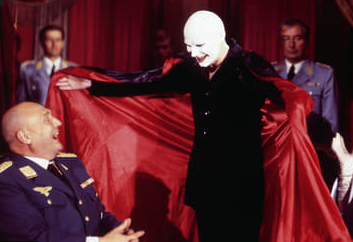 From the movie Mefisto, based on Klauss Mann's novelHaving fled from the Nazis to America, Mann famously said “where I am, there is Germany,” and basic to this novel is the parallellism between German culture as a whole, Leverkühn as its fictional representative, and Mann himself as the real-life double of both. I know of no comparable case of a writer practicing such deep and honest introspection with respect to his very own sources of creative inspiration, under the pressure of having to compare them to something as frightening and demonic as the Nazi horrors. Only against this background is it possible to really understand Mann’s development from his initial political conservatism (Betrachtungen eines Unpolitischen) to his eventual embrace of liberal humanism and democracy. This gradual process of transformation led from intellectual aestheticism and cultural elitism towards an ever deeper concentration on the values of common humanity, die Menschlichkeit – a concern that had moved towards the foreground in Der Zauberberg and culminated in his great four-volume series Joseph and his Brothers. Very significantly, it was not in the German but in the Jewish context that Mann found his most potent models of humanity; but it is only in Doktor Faustus that one feels the full extent of the emotional pain, violent conflict and deep mourning that was involved for Mann in having to face up to and analyze the pathological potential of the German culture that he himself embodied and loved. In this sense, this novel may be the most impressive example of literary psychoanalysis (in the original sense of soul-searching) that I have ever come across.
From the movie Mefisto, based on Klauss Mann's novelHaving fled from the Nazis to America, Mann famously said “where I am, there is Germany,” and basic to this novel is the parallellism between German culture as a whole, Leverkühn as its fictional representative, and Mann himself as the real-life double of both. I know of no comparable case of a writer practicing such deep and honest introspection with respect to his very own sources of creative inspiration, under the pressure of having to compare them to something as frightening and demonic as the Nazi horrors. Only against this background is it possible to really understand Mann’s development from his initial political conservatism (Betrachtungen eines Unpolitischen) to his eventual embrace of liberal humanism and democracy. This gradual process of transformation led from intellectual aestheticism and cultural elitism towards an ever deeper concentration on the values of common humanity, die Menschlichkeit – a concern that had moved towards the foreground in Der Zauberberg and culminated in his great four-volume series Joseph and his Brothers. Very significantly, it was not in the German but in the Jewish context that Mann found his most potent models of humanity; but it is only in Doktor Faustus that one feels the full extent of the emotional pain, violent conflict and deep mourning that was involved for Mann in having to face up to and analyze the pathological potential of the German culture that he himself embodied and loved. In this sense, this novel may be the most impressive example of literary psychoanalysis (in the original sense of soul-searching) that I have ever come across.Volume 11: The Holy Sinner
Having emerged from the deep darkness of Doctor Faustus, I wasted no time and continued right away with Der Erwählte (The Elected, but known in English as The Holy Sinner). I had never read it before. This small novel is based upon the medieval legend of the great pope St. Gregory as originally told by Hartmann von Aue. Thomas Mann already included a short version of it in Doktor Faustus too, where the composer Adrian Leverkühn puts it to music, but clearly Mann felt that the story deserved more.
Again, what a delight! As already indicated, Doktor Faustus is a dark, indeed very dark and heavy novel, a tragic and deeply pessimistic work of mourning (Trauerarbeit) over the catastrophic decline of German culture under Hitler. Now that he had put that task behind him, and World War II was mercifully over at last, it is clear that Mann needed some emotional relief. On every page of this book, you can feel the sheer joy of finally being able again to just tell a story – for the fun of it, without all that heavy sense of responsibility about writing the novel about German’s pact with the devil while knowing all too well that you are yourself Germany’s greatest living writer.
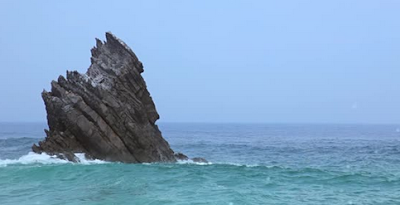 And what an amazing story it is... A royal couple have twins: a brother and a sister. The twins fall in love (or rather, are in love since they are born) and commit incest, resulting in her giving birth to a baby boy, who like Moses is put in a little boat and sent out into the sea, to prevent a scandal. The baby reaches an isolated island and is saved; and having grown up, he sets out to find his parents. Coming to the city where his mother still reigns as queen (his father has died on a crusade to do penance for his sins), but not knowing who she is, he miraculously saves the city from its enemies and ends up marrying the queen, his own mother, who gives birth to two daughters. Incest number two. When they finally discover who they are, they see no other way to escape eternal damnation than through the gravest penance. The son/husband spends seventeen years on a lonely rock in the sea, surviving on some kind of earthly “mother’s milk” that miraculously comes from the rock. Finally he is saved because two Roman gentlemen have divine dreams that tell them that the person elected by God to be the new pope will be found there on that rock. And so it happens. He ends up becoming a “very great pope,” is re-united with his mother-wife and his daughters too, and they all live happily ever after.I guess it’s a no-brainer that only a very great writer can re-tell such a wildly improbable story full of “naive” medieval piety (not to mention the incestuous and oedipal theme) and make it all work. You guessed it – Thomas Mann proves more than up to the challenge. This novel contains perhaps some of the very best written prose I have ever read, by anyone anywhere, including even in Mann’s own oeuvre – sparkling, sovereign, with incredible rhythmic flexibility, light and yet serious, poised perfectly between irony, satire and tragedy, so that the reader is willing to believe anything he is being told, no matter how weird it gets. So that’s what a genius writer does when the hard work is finally over and he is looking to have some fun.
And what an amazing story it is... A royal couple have twins: a brother and a sister. The twins fall in love (or rather, are in love since they are born) and commit incest, resulting in her giving birth to a baby boy, who like Moses is put in a little boat and sent out into the sea, to prevent a scandal. The baby reaches an isolated island and is saved; and having grown up, he sets out to find his parents. Coming to the city where his mother still reigns as queen (his father has died on a crusade to do penance for his sins), but not knowing who she is, he miraculously saves the city from its enemies and ends up marrying the queen, his own mother, who gives birth to two daughters. Incest number two. When they finally discover who they are, they see no other way to escape eternal damnation than through the gravest penance. The son/husband spends seventeen years on a lonely rock in the sea, surviving on some kind of earthly “mother’s milk” that miraculously comes from the rock. Finally he is saved because two Roman gentlemen have divine dreams that tell them that the person elected by God to be the new pope will be found there on that rock. And so it happens. He ends up becoming a “very great pope,” is re-united with his mother-wife and his daughters too, and they all live happily ever after.I guess it’s a no-brainer that only a very great writer can re-tell such a wildly improbable story full of “naive” medieval piety (not to mention the incestuous and oedipal theme) and make it all work. You guessed it – Thomas Mann proves more than up to the challenge. This novel contains perhaps some of the very best written prose I have ever read, by anyone anywhere, including even in Mann’s own oeuvre – sparkling, sovereign, with incredible rhythmic flexibility, light and yet serious, poised perfectly between irony, satire and tragedy, so that the reader is willing to believe anything he is being told, no matter how weird it gets. So that’s what a genius writer does when the hard work is finally over and he is looking to have some fun.Volume 12: Felix Krull
I had not read this one before, and it was a surprise in several ways. As the editor explains, the Krull project is the only one that spans the entirety of Thomas Mann’s career: he started it in his early years, then kept dropping it for other projects and kept returning to it, with increasing hesitation as time went on, until finally he just barely managed to finish its third book shortly before his death. Krull remains unfinished and ends with a surprising cliffhanger. One effect of the very long writing period is that the three published books document the development of Thomas Mann’s writing skills like no other. Parts of it are simply well written without being extraordinary; but then again and again, quite suddenly from one moment to the next, the writing moves to an entirely different register with such absolutely luminous prose and such profound levels of observation and reflection that one knows this must have been written in Mann’s final and most mature period. For me personally, the chapters about the actor Müller-Rosé and the circus trapeze artist “Andromache” remain unforgettable highlights (again, about the conflict between the public persona and one’s own real self), but there are many other gems. I think for instance of Krull’s simulation of sickness to stay out of school; his simulation of epilepsy to stay out of military service; his seduction by a wealthy woman in the hotel, who gets excited by the idea of him stealing valuables from her room (the most erotic scene Thomas Mann ever wrote, which actually caused some reviewers to call it “not suitable for minors”!); and his nearly successful seduction of Zouzou by means of a beautiful long discourse about the true nature of love.
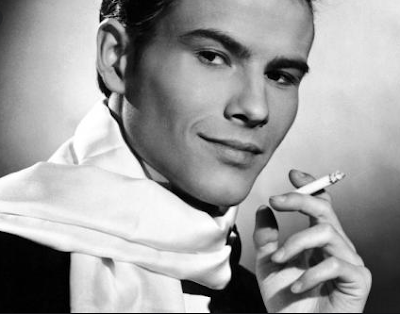 This latter passage is profoundly ambiguous, because by now the reader knows that Krull does not understand what love is. Yet he can still talk about it so well that as readers we are more than happy to believe everything he says. For seasoned Thomas Mann readers, most fascinating about the Krull project must be how he analyzes the hidden connections between the artist and the imposter (Hochstapler) or confidence man. Mann says that the artist, by necessity, is playing a role, and must play it to such perfection that the audience will never notice the effort. What the audience loves about the artist is the brilliance of the act, the perfection of the deception – not the actual truth of the person behind the screen, the one who is doing the acting but whose true nature must remain hidden from view. The audience does not love the artist, only his art. The public honour and recognition that the artist earns through his work is the flip side of his solitude: nobody knows who he really is, and frankly, nobody cares. Krull is the natural born pretender, and at the core of his identity there is a void – his public roles are really all there is, and that seems to be just fine with him. At the core of Thomas Mann’s identity and at the heart of his oeuvre, by contrast, there is not a void but a deep loneliness: a profound human need to express himself to his readers – to tell them who he really, really is – but with the acute awareness that he will never be able to express that truth except by continuing to hide behind one mask after the other. Again, they do not want the truth, they want the illusion. And they are right too, for the truth may be deeply human but isn’t beautiful. Still, paradoxically, the undeniable and even deeper beauty of Thomas Mann’s oeuvre comes precisely from this human core at the very center, one that can only be revealed and expressed by virtue of being hidden and suppressed.
This latter passage is profoundly ambiguous, because by now the reader knows that Krull does not understand what love is. Yet he can still talk about it so well that as readers we are more than happy to believe everything he says. For seasoned Thomas Mann readers, most fascinating about the Krull project must be how he analyzes the hidden connections between the artist and the imposter (Hochstapler) or confidence man. Mann says that the artist, by necessity, is playing a role, and must play it to such perfection that the audience will never notice the effort. What the audience loves about the artist is the brilliance of the act, the perfection of the deception – not the actual truth of the person behind the screen, the one who is doing the acting but whose true nature must remain hidden from view. The audience does not love the artist, only his art. The public honour and recognition that the artist earns through his work is the flip side of his solitude: nobody knows who he really is, and frankly, nobody cares. Krull is the natural born pretender, and at the core of his identity there is a void – his public roles are really all there is, and that seems to be just fine with him. At the core of Thomas Mann’s identity and at the heart of his oeuvre, by contrast, there is not a void but a deep loneliness: a profound human need to express himself to his readers – to tell them who he really, really is – but with the acute awareness that he will never be able to express that truth except by continuing to hide behind one mask after the other. Again, they do not want the truth, they want the illusion. And they are right too, for the truth may be deeply human but isn’t beautiful. Still, paradoxically, the undeniable and even deeper beauty of Thomas Mann’s oeuvre comes precisely from this human core at the very center, one that can only be revealed and expressed by virtue of being hidden and suppressed.And now I will continue my exploration of the GKFA with Thomas Mann’s non-fiction, beginning with Betrachtungen eines Unpolitischen. Stay tuned…
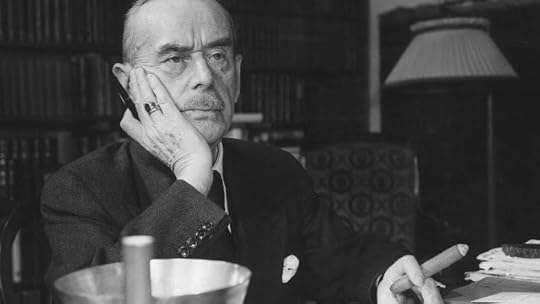
October 25, 2019
Remembering Jac. Lissenberg
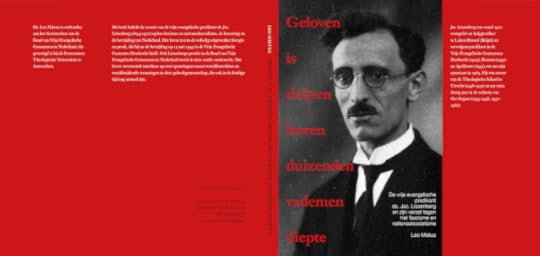
Like the members of many other Dutch denominations during the 1930s, Free Evangelicals were often hesitant and undecided about what to think of Mussolini and Hitler; and according to the dominant view among historians of this community, their narrow millenarian focus on the imminent arrival of the eschaton resulted in a passive attitude towards current political events. Leo Mietus corrects this picture by showing that Jac. Lissenberg, one of the most prominent and authoritative voices within the Free Evangelical Community of the Netherlands, spoke out against fascism, national socialism and antisemitism from the very beginning. As editor of the community's journal Ons Orgaan, he made perfectly clear that any acceptance of fascist or antisemitic ideology was wholly incompatible with the core convictions that evangelical Christians should hold sacred. As such, he played an important role in warning his fellow believers against the temptation of a collaborationist attitude and opening their eyes about the truth of what was going on. Based on meticulous archival research, Leo Mietus tells the story of Lissenberg's anti-fascist engagement through the 1930s and 1940s and the resulting discussions, including conflicts with colleagues and other members of his community. During the preparation of his book, Mietus also conducted several interviews with my mother, who is now 92 and the only one of Jac. Lissenberg's children to be still alive. Some photos from the family album are reproduced in the book.
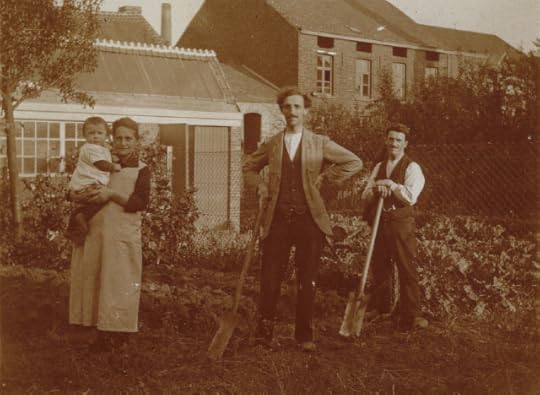 To read this story about my grandfather was a moving and inspiring experience for me. Having been raised with my mother's stories about the German occupation, his horror of fascism and antisemitism came as no surprise, but I did not know how explicitly and eloquently he had expressed his convictions in writing and how influential he had been in his religious community. I also learned much about other aspects of Jac. Lissenberg's personality, such as his profound love for literature, music, and art (including the satirical anti-fascist cartoons of Georg Grosz; but my mother had also often told me about his hobby of hunting for paintings at the Waterlooplein, the famous Amsterdam flea market in pre-commercial times). As we find ourselves faced with a return of right-wing extremism and racial hatred today, and with a public debate that often seems to mirror that of the 1920s and 30s, Lissenberg's writings as recovered by Mietus remain as relevant as they were in the 1930s. He lived in other times, and his religious or spiritual outlook was somewhat different from my own, but this book made me realize how superficial such differences may sometimes be. Underneath the transformations of history and culture, profound as they may seem, I perceived an even deeper moral and existential continuity that seems to have been running through our maternal family line for a century or more. Jac. Lissenberg lived his life with his eyes and heart wide open, and never hesitated to speak out on behalf of goodness, truth, and even beauty. I feel proud to be his grandson.
To read this story about my grandfather was a moving and inspiring experience for me. Having been raised with my mother's stories about the German occupation, his horror of fascism and antisemitism came as no surprise, but I did not know how explicitly and eloquently he had expressed his convictions in writing and how influential he had been in his religious community. I also learned much about other aspects of Jac. Lissenberg's personality, such as his profound love for literature, music, and art (including the satirical anti-fascist cartoons of Georg Grosz; but my mother had also often told me about his hobby of hunting for paintings at the Waterlooplein, the famous Amsterdam flea market in pre-commercial times). As we find ourselves faced with a return of right-wing extremism and racial hatred today, and with a public debate that often seems to mirror that of the 1920s and 30s, Lissenberg's writings as recovered by Mietus remain as relevant as they were in the 1930s. He lived in other times, and his religious or spiritual outlook was somewhat different from my own, but this book made me realize how superficial such differences may sometimes be. Underneath the transformations of history and culture, profound as they may seem, I perceived an even deeper moral and existential continuity that seems to have been running through our maternal family line for a century or more. Jac. Lissenberg lived his life with his eyes and heart wide open, and never hesitated to speak out on behalf of goodness, truth, and even beauty. I feel proud to be his grandson.[I attach an English translation of my Foreword to Leo Mietus' volume]
ForewordI know my grandfather through my mother’s memories. Thanks to her stories, after his death in 1970 he lived on in my family’s collective memory not just as a good and sincere human being but as a man of justice, a man who lived from his deepest convictions and inspired others by his example. Undoubtedly he himself would have been the first to protest against such a picture and try to relativize it, because of his strong conviction that no human being can ever claim to be better than others. Indeed he made no such claim, and it is precisely for that reason that the picture is correct. It is the key to his personality and explains his unwavering attitude towards National Socialism.On the basis of extensive and very diligent archival research, Leo Mietus in this book corrects the traditional image of the Covenant of Free Evangelical Congregations in the Netherlands as a “defeatist faith community that had remained in default during the 1930s and 1940s.” As it turns out, in the Free Evangelical periodical Ons Orgaan, the authoritative voice of minister Jacobus Lissenberg was speaking out, ever again and without the slightest ambiguity, against Hitler’s ideology as “a most fatal spiritual revelation from the abyss” and against antisemitism, “from the poison of which God may preserve the Netherlands!” For me as his grandson, the fact that this was my grandfather’s opinion did not come as a surprise. My sister and I have been raised with my mother’s memories of the German occupation: the persecutions of the Jews, the razzias, the hunger winter, the voice of Hitler bragging over the radio, or the sinister threat of soldiers’ batallions that she, as a little girl lying in her bed at night, heard marching through the silent streets while singing sentimental German folk songs. There was also the amusing anecdote about an in-law who imagined he could visit my grandfather in his home dressed in the uniform of the NSB [the Dutch National Socialist organization] but was told to go home and change into civil clothes before he could come inside.As grandchildren we had also heard the beautiful story of how one Sunday, my grandfather led his community in church to sing the Wilhelmus (the Dutch national anthem) whispering. But that his public role as a critic of Nazism in the Free Evangelical Congrations had been that important – this we hardly knew. From the archival materials that Mietus has collected and put in context, it has now become clear how early and how sharply Lissenberg perceived the true nature of National Socialism, how forcefully and explicitly he took his stance both in speech and in writing, and how courageously he responded to those who thought their Christian beliefs could be combined with support or tolerance for the Nazi ideology. However, it was typical of his approach that he nevertheless refused to condemn or “cancel” people as human beings because of their weakness or lack of deeper understanding of what was really going on. Lissenberg considered it his task to be a witness of the truth and try to arm his parishioners against the temptation of evil, but as concerns those who succumbed nevertheless, he left judgment to God. This book’s title is very well chosen, for it touches the core of Lissenberg’s existential attitude to life. Quite rightly he comes back several times to Kierkegaard’s statement that Christian faith is like “floating above a thousand fathoms’ depth.” These words have sometimes been placed in connection with a quotation by Wittgenstein, who compares religion to the depths of the ocean that remain undisturbed regardless of the storms that may rage on the water’s surface. But Kierkegaard’s meaning was much more radical, and I am sure that Lissenberg followed him in this: about that unfathomable abyss in which we might drown at any moment we know nothing at all, not even whether any eternal rest will be found there. According to the Danish philosopher, as human beings we find ourselves in a permanent situation of “mortal danger” in which certainty is an illusion and all we can hold on to is our ability to let go. This analysis becomes acute in situations of war and occupation.Thanks to this book, my mother’s memories of her father and my grandfather have gained a wholly new dimension, based on a wealth of factual information that had so far remained unavailable. The picture of his personality is now no longer limited to the personal sphere of family memories but has taken on a broader relevance for the church history of the Netherlands during the German occupation and the years before and after. Many thanks to Leo Mietus for rescuing Ds. Jacobus Lissenberg from oblivion and restoring him to the place in our history that he deserves.
Wouter J. Hanegraaff, “Voorwoord” (pp. 10-12) in: Leo Mietus, Geloven is drijven boven duizenden vademen diepte: De vrije evangelische Predikant ds. Jac. Lissenberg en zijn verzet tegen het fascisme en nationaalsocialisme [Believing means floating above a thousand fathoms’ depth: The Free Evangelical Minister ds. Jac. Lissenberg and his resistance against fascism and national socialism], Stichting Seminarium Bond van Vrije Evangelische Gemeenten 2019 [259 pp.]
June 16, 2018
Esotericism and Criticism: A Platonic Response to Arthur Versluis
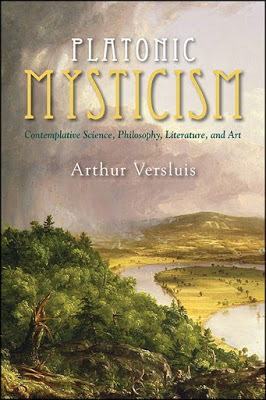 The establishment of Western esotericism as a field of academic research since the 1990s has been accompanied by a good deal of theoretical and methodological debate. However, because scholars are understandably passionate about their work, such discussions always run the risk of degenerating into negative polemics and personal invectives, and our young field has certainly had its share of those. It is a fact of human psychology that if opinions that we personally cherish are being criticized by others, nothing is easier than to experience such criticism as a personal attack. Once this happens, most of us find it hard to keep listening accurately to what our opponents are trying to say – it is all too easy to begin imagining them as “enemies” rather than as colleagues whose opinions and commitments just happen to be different from our own and who might have something to say that we do not yet see. On the following pages I will be discussing a strong example which seems representative of an unfortunate rift that has appeared in the community of esotericism scholars. This case concerns an attack on my own work that is just a bit too extreme to be ignored, but I hope to avoid falling into the retaliatory trap of tit-for-tat. Rather, I want to do my best to re-open an important discussion in the study of esotericism that has clearly turned sour and negative. The occasion for making this attempt is a chapter in Arthur Versluis’s recent volume Platonic Mysticism: Contemplative Science, Philosophy, Literature, and Art (State University of New York Press: Albany 2017).
The establishment of Western esotericism as a field of academic research since the 1990s has been accompanied by a good deal of theoretical and methodological debate. However, because scholars are understandably passionate about their work, such discussions always run the risk of degenerating into negative polemics and personal invectives, and our young field has certainly had its share of those. It is a fact of human psychology that if opinions that we personally cherish are being criticized by others, nothing is easier than to experience such criticism as a personal attack. Once this happens, most of us find it hard to keep listening accurately to what our opponents are trying to say – it is all too easy to begin imagining them as “enemies” rather than as colleagues whose opinions and commitments just happen to be different from our own and who might have something to say that we do not yet see. On the following pages I will be discussing a strong example which seems representative of an unfortunate rift that has appeared in the community of esotericism scholars. This case concerns an attack on my own work that is just a bit too extreme to be ignored, but I hope to avoid falling into the retaliatory trap of tit-for-tat. Rather, I want to do my best to re-open an important discussion in the study of esotericism that has clearly turned sour and negative. The occasion for making this attempt is a chapter in Arthur Versluis’s recent volume Platonic Mysticism: Contemplative Science, Philosophy, Literature, and Art (State University of New York Press: Albany 2017).To understand what is happening in this chapter, a bit of context and background is needed. Arthur and I have known each other since the early 1990s, when he visited the Netherlands, and we saw quite a lot of each other in the years that followed. He spent time at my place in Utrecht, and I came to visit him for days at his amazing house in the midst of the Michigan cornfields. Since we were both passionate about the project of promoting the study of Western esotericism, we engaged on a course of fruitful and friendly collaboration, as can be seen from a whole series of articles that we contributed to one another’s publication projects. It was pretty clear from the beginning that we came from very different academic traditions and our approaches to “esotericism” were quite different as well, but for a long time this did not cause serious problems. Of course we had our moments of disagreement or mutual puzzlement about one another’s positions, but the basic situation was one of mutual respect, friendship, and appreciation. That all changed in 2013, when I published a large review article “Textbooks and Introductions to Western Esotericism,” including a section titled “Esoteric Religionism” about Arthur’s Magic and Mysticism: An Introduction to Western Esotericism (Lanham 2007). Here I introduced him as “the most prominent American representative, in his generation, of a pure religionist approach to esotericism in the tradition of Eliade, Corbin or the younger Faivre” (186). My discussion focused on what I saw as a lack of textual organization and careful editing, on some questionable choices concerning what to include and exclude, and most importantly, on what struck me as a “lack of real interest in confronting the problems and dilemmas of modern historical scholarship” (187). I personally considered it a critical but fair review, and this remains my honest opinion as I re-read it today. Arthur, however, responded with great anger. He clearly experienced the review as a personal attack, and our contact came virtually to an end. This was a sad experience for me, as I’m sure it must have been for him, but I had no other choice than to accept it. Although my review article is never mentioned, Arthur’s chapter “The Externalist Fallacy” (Platonic Mysticism, 71-84) is clearly his response to it. My critiques of his 2007 book are passed over in silence, but what appears to have incensed him is being described as a “religionist” (worse: a “pure” one!). This is because he believes – incorrectly, as I will try to explain – that I use “religionism” as a pejorative label for approaches I dislike; or in other words, he seems to think I was accusing him of being that most despicable thing – a religionist. Starting from this incorrect assumption, Arthur embarks on a whole series of allegations, some of them very much ad hominem. The final result is a picture of my work and its “malign” (72) intentions that, as I hope to show, bears almost no resemblance to my actual perspective. If I were to return the compliment and suspect Arthur of “malign” intentions towards me, there would be no point in responding. However, the fact is that I do not doubt his honesty – I readily assume he believes sincerely in the accuracy of his interpretation. This gives me some hope that I might perhaps be able to correct the picture. As far as I can see, it can be broken down into six interrelated claims about me and my ideas. I will discuss them one by one.
Wouter hates religionism
Arthur quotes my technical definition of “religionism” – a term, by the way, which I did not invent but that was current at least as early as the 1990s – as “the project of exploring historical sources in search of what is eternal and universal” (75, referring to Esotericism and the Academy , 296). Therefore he knows what I mean by it. Nevertheless, elsewhere he claims that critics like me dismiss as a religionist “anyone who takes seriously the philosophical and religious perspectives that he or she is studying” (27). Now this is something else entirely: presumably I believe that scholars of esotericism should not take those whom they are studying seriously! To be honest, this claim makes my head spin. How, I wonder, could anybody who has read my work draw such a conclusion? I am all about trying to do justice to esoteric traditions, thinkers, and ideas that have been unjustly marginalized for a long period but deserve to be taken seriously. I’m not sure how it happened, but somewhere along the way, Arthur seems to have gotten me confused with a certain type of debunking skeptic, a hyper-rationalist of the old school who considers it the sacred duty of academics to expose esotericism as “irrational rubbish.” In fact all my work is directed against such attitudes.
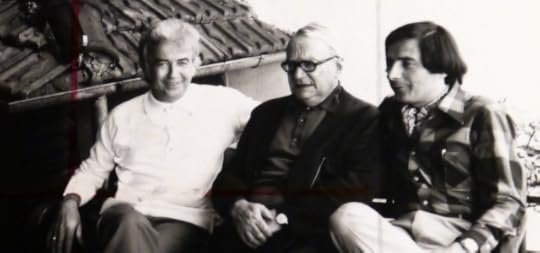 Religionists: Gilbert Durand, Henry Corbin, and Antoine Faivre at Eranos (1970s)How to explain such a monumental misperception? As far as I can see, two things are going wrong in the chapter. First, Arthur seems to think that “taking esoteric beliefs seriously” means affirming that they are true. If an esoteric Platonist professes belief in the eternal ideas, then I am not taking him seriously unless I say “yes, you are right, the eternal ideas exist!” Second, Arthur seems to assume that one cannot have respect or appreciation for any perspective with which one does not personally agree. Therefore if I disagree with religionist methodologies for technical reasons, this must mean that I have no respect or appreciation for them or their representatives.Both assumptions are wide of the mark. In fact I take any belief seriously if I can see that it is being held with sincerity and conviction – but obviously that does not mean that I necessarily share it. Only by taking someone seriously can I empathize with him or her, and it is my duty as a scholar (a very pleasant one, I might add) to do what I can to imaginatively “enter” the world of those I study, so as to understand as well as possible what they are saying and doing, or why. I am not saying that the task of the scholar ends there. Once having immersed oneself deeply in a text or a tradition, there comes the point where one has to step back and create sufficient distance to see the topic from a wider and more independent perspective. The ability to do both, and do it well, I see as a boundary condition for quality in scholarship. As for the second point: it is certainly true that I have serious objections to religionist theories and their methodological implications, but this has absolutely nothing to do with respect or appreciation. Perhaps the best example is my longstanding friendship with Jeffrey J. Kripal, the most sophisticated “neo”religionist scholar of religion known to me (he himself accepts the label as “not inappropriate,” see page 129 here). I have reviewed his work critically, and he has returned the favour (see pp. 125-132 here), but our discussions have always been grounded in mutual respect and, indeed, admiration. I wouldn’t teach his approach to my students, but I do make them read his work and tell them they have to consider it seriously. If they end up following Jeff's course, they have my blessing. The simple truth is that I do not hate religionism at all. On the contrary, I see it as an inherently problematic but very important intellectual tradition. Religionist scholarship has always been an endlessly fascinating phenomenon for me, and I have the greatest respect for its famous representatives (plus some of its less famous ones). So what do I find so “problematic”? Simply the fact that you cannot write the history of something that transcends history. Still, the very impossibility of resolving this paradox, which I believe lies at the heart of religionism, has led to brilliantly creative and profound attempts at resolving it nevertheless. That is where the fascination lies, at least for me. In this regard – and here Arthur and I find ourselves in agreement – the religionism of Eranos is somewhat similar to the great tradition of Platonism, which I admire even more, and which lives from the deep contradiction between Being (the eternal forms or ideas) and Becoming (our world of impermanence and change). Being able to hold two contradictory notions in one’s mind at the same time is not a sign of intellectual weakness: on the contrary, all the great metaphysical thinkers in the Platonic tradition (think for instance of Cusanus or Bruno) have known that, once you go beyond first appearances in exploring reality, you encounter logical paradoxes all the way down – or rather, into infinity. So no, Arthur, believe me: I don’t hate religionism. I don’t despise it. I don’t try to exclude it. Sure: I do not share its approach to the study of religion, and I do advocate different methodologies in esotericism research. But I do so openly, explicitly, with respect, and with arguments. If there is anything that has disappointed me about this debate since the 1990s, it is that so few scholars on the “religionist” side (Jeff Kripal being a notable exception) have been interested in listening to critics and engaging their arguments in a constructive manner. Instead, what almost always happens is that critics are simply dismissed out of hand, and perceived as “inquisitors” with “malign” intentions who try to “exclude” or even “excommunicate” those with whom they disagree. This brings me to the second point.
Religionists: Gilbert Durand, Henry Corbin, and Antoine Faivre at Eranos (1970s)How to explain such a monumental misperception? As far as I can see, two things are going wrong in the chapter. First, Arthur seems to think that “taking esoteric beliefs seriously” means affirming that they are true. If an esoteric Platonist professes belief in the eternal ideas, then I am not taking him seriously unless I say “yes, you are right, the eternal ideas exist!” Second, Arthur seems to assume that one cannot have respect or appreciation for any perspective with which one does not personally agree. Therefore if I disagree with religionist methodologies for technical reasons, this must mean that I have no respect or appreciation for them or their representatives.Both assumptions are wide of the mark. In fact I take any belief seriously if I can see that it is being held with sincerity and conviction – but obviously that does not mean that I necessarily share it. Only by taking someone seriously can I empathize with him or her, and it is my duty as a scholar (a very pleasant one, I might add) to do what I can to imaginatively “enter” the world of those I study, so as to understand as well as possible what they are saying and doing, or why. I am not saying that the task of the scholar ends there. Once having immersed oneself deeply in a text or a tradition, there comes the point where one has to step back and create sufficient distance to see the topic from a wider and more independent perspective. The ability to do both, and do it well, I see as a boundary condition for quality in scholarship. As for the second point: it is certainly true that I have serious objections to religionist theories and their methodological implications, but this has absolutely nothing to do with respect or appreciation. Perhaps the best example is my longstanding friendship with Jeffrey J. Kripal, the most sophisticated “neo”religionist scholar of religion known to me (he himself accepts the label as “not inappropriate,” see page 129 here). I have reviewed his work critically, and he has returned the favour (see pp. 125-132 here), but our discussions have always been grounded in mutual respect and, indeed, admiration. I wouldn’t teach his approach to my students, but I do make them read his work and tell them they have to consider it seriously. If they end up following Jeff's course, they have my blessing. The simple truth is that I do not hate religionism at all. On the contrary, I see it as an inherently problematic but very important intellectual tradition. Religionist scholarship has always been an endlessly fascinating phenomenon for me, and I have the greatest respect for its famous representatives (plus some of its less famous ones). So what do I find so “problematic”? Simply the fact that you cannot write the history of something that transcends history. Still, the very impossibility of resolving this paradox, which I believe lies at the heart of religionism, has led to brilliantly creative and profound attempts at resolving it nevertheless. That is where the fascination lies, at least for me. In this regard – and here Arthur and I find ourselves in agreement – the religionism of Eranos is somewhat similar to the great tradition of Platonism, which I admire even more, and which lives from the deep contradiction between Being (the eternal forms or ideas) and Becoming (our world of impermanence and change). Being able to hold two contradictory notions in one’s mind at the same time is not a sign of intellectual weakness: on the contrary, all the great metaphysical thinkers in the Platonic tradition (think for instance of Cusanus or Bruno) have known that, once you go beyond first appearances in exploring reality, you encounter logical paradoxes all the way down – or rather, into infinity. So no, Arthur, believe me: I don’t hate religionism. I don’t despise it. I don’t try to exclude it. Sure: I do not share its approach to the study of religion, and I do advocate different methodologies in esotericism research. But I do so openly, explicitly, with respect, and with arguments. If there is anything that has disappointed me about this debate since the 1990s, it is that so few scholars on the “religionist” side (Jeff Kripal being a notable exception) have been interested in listening to critics and engaging their arguments in a constructive manner. Instead, what almost always happens is that critics are simply dismissed out of hand, and perceived as “inquisitors” with “malign” intentions who try to “exclude” or even “excommunicate” those with whom they disagree. This brings me to the second point.Wouter is a Protestant heresiophobe who wants to dump esotericism into the dustbin
From my discussion of the Protestant “anti-apologetic” tradition and its battle against Hellenistic paganism in the early modern period (Esotericism and the Academy, ch. 2), Arthur appears to have concluded that I am on the side of the heresy-hunters and applaud their ideas! They were sworn enemies of esotericism, and so am I (75ff). This misinterpretation is so bizarre that, frankly, I had trouble believing my eyes when I first read it. But I had to believe them, for one page later it got even worse:
It is perhaps worth nothing … that Wouter Hanegraaff’s father was a Protestant minister and theologian and that one of the most prominent American evangelical authors is in fact Hanegraaff’s relative, Hank Hanegraaff, who has produced antiesoteric, antioccult resources online, derived from a combination of, yes, biblical Protestantism (he is known as the “Bible Answer Man”) and opposition to what he perceives as irrational or demonically inspired superstition (76).
Is this supposed to be the smoking gun? It is certainly correct that my father was a Protestant minister. His brother Hans – also a minister – emigrated to the United States, and Hank Hanegraaff is one of his sons, so we are cousins. We met just once in our lives, when Hank was visiting the Netherlands. We had one friendly chat in my mother’s garden, and everybody was careful not to mention religion. Anyone who is remotely familiar with my work knows how strongly I feel about the study of religion as a secular discipline incompatible with doctrinal theology of any kind. As for Hank, with all due respect, his ideas about cults and the occult as demonic threats could not be further removed from mine, as anybody will see who just cares to compare our writings. So what is the point of Arthur bringing this up? Does he want his readers to think of me as some kind of sinister double agent, a Christian fundamentalist in disguise who is out to destroy esotericism under the pretense of studying it?
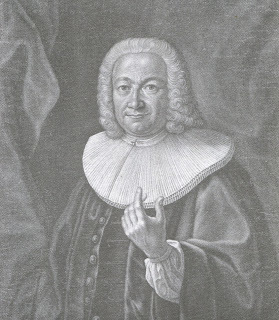 Johann Jacob BruckerMy actual argument, of course, is the very opposite. Protestant heresiophobes (Arthur's term: see p. 81) like Jacob Thomasius and Ehregott Daniel Colberg created the intellectual foundations for an “anti-apologetic” tradition (a systematic attack on the Platonizing patristic theology of the so-called “Christian apologists”) that made it possible for Jacob Brucker – whose work came to dominate the field of history of philosophy during the 18th and early 19th centuries – to expurgate everything we now see as “esotericism” from the history of legitimate academic philosophy and dump it into the “wastebasket” of history. Like his predecessor Christoph August Heumann, he would like to see it all vanish “into the sea of oblivion,” to be forgotten forever. In a nutshell, this is how and why esotericism came to be excluded or “exorcized” from academic research since the period of the Enlightenment and throughout the 19th century. Obviously I do not consider that a good thing, as Arthur seems to believe. On the contrary, it was an intellectual disaster that has distorted our very understanding of Western culture up to the very present; and the entire rest of my book describes the difficult process of restoring esotericism to the academy from the 20thcentury on. In short, the modern study of esotericism is all about undoing the damage done by those Protestant heresiophobes and their agendas. Nevertheless, Arthur seems to have made up his mind that I am on their side and secretly applaud their anti-Platonist and anti-esoteric alarmism. On page 75, he triumphantly quotes me for endorsing their polemics as “exactly the right combination.” In fact, if you read those words in context you will see that I was saying something different:
Johann Jacob BruckerMy actual argument, of course, is the very opposite. Protestant heresiophobes (Arthur's term: see p. 81) like Jacob Thomasius and Ehregott Daniel Colberg created the intellectual foundations for an “anti-apologetic” tradition (a systematic attack on the Platonizing patristic theology of the so-called “Christian apologists”) that made it possible for Jacob Brucker – whose work came to dominate the field of history of philosophy during the 18th and early 19th centuries – to expurgate everything we now see as “esotericism” from the history of legitimate academic philosophy and dump it into the “wastebasket” of history. Like his predecessor Christoph August Heumann, he would like to see it all vanish “into the sea of oblivion,” to be forgotten forever. In a nutshell, this is how and why esotericism came to be excluded or “exorcized” from academic research since the period of the Enlightenment and throughout the 19th century. Obviously I do not consider that a good thing, as Arthur seems to believe. On the contrary, it was an intellectual disaster that has distorted our very understanding of Western culture up to the very present; and the entire rest of my book describes the difficult process of restoring esotericism to the academy from the 20thcentury on. In short, the modern study of esotericism is all about undoing the damage done by those Protestant heresiophobes and their agendas. Nevertheless, Arthur seems to have made up his mind that I am on their side and secretly applaud their anti-Platonist and anti-esoteric alarmism. On page 75, he triumphantly quotes me for endorsing their polemics as “exactly the right combination.” In fact, if you read those words in context you will see that I was saying something different:[T]he anti-apologetic historiography pioneered by Jacob Thomasius, Colberg, and Brucker … was characterized by a methodology of historical criticism combined with a theoretical focus on the manifold effects of the encounter between Hellenistic paganism and biblical traditions. This, I suggest, was exactly the right combination. If this basic agenda had been continued and further developed after the Enlightenment (presumably shedding its normative theological assumptions in the process), the study of “Western esotericism” might well have established itself on secure historical foundations already in the nineteenth century. As it happened, this line of inquiry was cut short … leading to a scholarly “Waste Land” instead.
There is no cure for sloppy reading. What I am advocating here is not some heresiophobic agenda congenial to Protestant fundamentalists such as Colberg or my cousin Hank. Instead, I am making two points. First, to understand what “esotericism” is all about, from a historical and theoretical point of view, the history of the encounter between Hellenistic paganism and biblical traditions is absolutely central. Second, I advocate the methods of historical criticism as crucial to studying this field. Of course, one might agree or disagree with that agenda. Other scholars may well propose different ways of conceptualizing and studying the field, and that is perfectly fine. What is not fine is to distort an argument beyond recognition and then score points against the caricature.
Wouter “orientalizes” Platonism
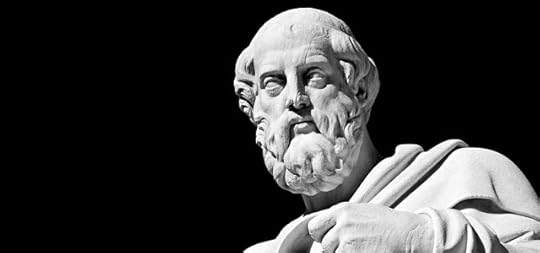
The general point of Arthur’s book is that Platonism should be restored to its original position as the central tradition of what has come to be called “mysticism.” In his second and third chapters, he shows how the rise of cross-cultural comparativism during the 20th century resulted in an eclipse of the original understanding of mysticism as Platonic. This is a strong argument with which I agree completely. It is all the more regrettable that Arthur completely misses the point of my concept of “Platonic Orientalism” and thinks it is inspired by some kind of Protestant anti-Platonic agenda.
Nothing could be farther from the truth. Arthur notes correctly that the term “Platonic Orientalism” was coined by John Walbridge, but mistakenly claims that “much of [Walbridge’s] work is dedicated to critique of the French scholar of esoteric Islam, Henry Corbin” (79). In truth, Walbridge’s books are deep and sensitive studies of the key Islamic thinker Suhrawardi; but the mere fact that he dares to disagree with Corbin’s reading of Suhrawardi seems enough for Arthur to see him as yet another enemy out to attack Corbin. As for my own understanding of “Platonic Orientalism,” once again Arthur creates a caricature by either ignoring or misrepresenting everything I have written about it. In fact the term refers, quite simply, to a very influential tradition that saw Platonism not as a rational philosophy created by Plato but as a spiritual wisdom tradition rooted in pre-Platonic sources such as Pythagoras, Moses, Zoroaster, or Hermes. Ironically, this should be quite congenial to Arthur’s own understanding of Platonism as a spiritual tradition. What seems to have provoked his ire, however, is the term “Orientalism,” which he thinks is “of course, a pejorative” (79). Never mind that both Walbridge and myself are explicit in pointing out that the terminology should not be confused with Edward Said’s famous notion but is wholly independent of it. Arthur simply ignores these statements, or refuses to believe them. He goes so far as to claim, without providing any evidence, that I use the term “not despite but because of the pejorative implications of ‘orientalism’” (79, emphasis in original) because it provides me with an excuse for not having to take Platonism and Platonic mysticism seriously “on their own terms” (ibid.).Again, this is completely wrong. Nothing in my work (or Walbridge’s, for that matter) suggests a pejorative understanding of “Platonic Orientalism” – quite the contrary. Far from wanting to “dismiss” it, I want to restore it to academic agendas. Moreover, I happen to agree with Arthur that what he calls the “mystical” dimension of Platonism must be taken very seriously indeed (not just in Plotinus or Dionysius, but also in Plato himself). Again, my true agenda is to expose the long-term negative effects of the Protestant heresiological imagination and its Enlightenment continuations, so that it may be possible for Platonism to be seen in its true light. How is it possible that Arthur got it so wrong? The only explanation I can think of is that, having already decided that I am a Protestant heresiophobe with malign intentions, just reading the term “Orientalism” caused his irritation to rise to such heights that he stopped reading and began jumping to conclusions all of his own.
Wouter embodies
the externalist fallacy
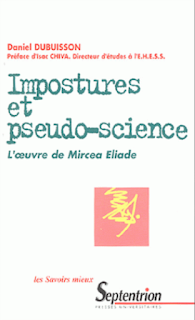 In passing, I should mention that the other scholar of religion singled out in Arthur’s chapter as exemplifying “the eternalist fallacy” is Daniel Dubuisson. Because we are both critical of “religionism,” readers could get the impression that Dubuisson’s perspective must be similar to my own. Certainly Arthur thinks that this is the case, but in fact it is not. While Dubuisson’s ideas would require a separate discussion, I do not at all share his extreme ideological viewpoint according to which fascism and antisemitism are structurally encoded in the type of (“religionist”) scholarship represented by Eliade (for this point, see Esotericism and the Academy, 302-3 nt 169, with special reference to the cogent refutation of such arguments by Elaine Fisher). Arthur does not mention this political dimension, but it might help explain the “withering scorn” (72) with which Dubuisson writes about Eliade. This is not my attitude at all, but Arthur suggests a connection by describing us both as guilty of the “externalist fallacy”:
In passing, I should mention that the other scholar of religion singled out in Arthur’s chapter as exemplifying “the eternalist fallacy” is Daniel Dubuisson. Because we are both critical of “religionism,” readers could get the impression that Dubuisson’s perspective must be similar to my own. Certainly Arthur thinks that this is the case, but in fact it is not. While Dubuisson’s ideas would require a separate discussion, I do not at all share his extreme ideological viewpoint according to which fascism and antisemitism are structurally encoded in the type of (“religionist”) scholarship represented by Eliade (for this point, see Esotericism and the Academy, 302-3 nt 169, with special reference to the cogent refutation of such arguments by Elaine Fisher). Arthur does not mention this political dimension, but it might help explain the “withering scorn” (72) with which Dubuisson writes about Eliade. This is not my attitude at all, but Arthur suggests a connection by describing us both as guilty of the “externalist fallacy”:What authors like Dubuisson and Hanegraaff assert is a radical externalism. Hanegraaff claims that the “experiential dimension that transcends history … will always remain inaccessible to scholarly research by definition” (78).
It is very strange that Arthur objects so much to this, for if you read the quotation closely and think it over, you will see that it describes exactly his own point of view! And more than that, it is a view with which I wholly agree. I know that this statement is likely to make his head spin, so let me explain.The externalist fallacy, as Arthur puts it, is “that one can do justice to esoteric religion from an exoteric perspective” (82), or “that what is most meaningful can be understood only through external discursive analysis” (82-83). Against this externalist fallacy, he quotes Peter Kingsley as saying that “there is no entrance to the esoteric from the outside” (82). Arthur might be amazed to hear it, but that is exactly what I am saying as well. Just compare those two statements by Kingsley and myself, and you will find they reach the same conclusion: if there is an “esoteric” dimension that transcends history, then obviously it will not be accessible by scholarly methods. I could not agree more. The externalist fallacy does not apply to me, so let me try to put the record straight once and for all. I do not at all believe “that one can do justice to esoteric religion [here understood in Arthur’s sense of the word, as an absolute reality that transcends history] from an exoteric perspective.” Nor do I believe “that what is most meaningful can be understood through external discursive analysis, as if one sought to realize the beauty of a magnificent Hudson River School landscape painting through analysis of its chemical content” (82-83). How could I possibly mean something so ridiculous? Again Arthur has gotten me confused with some old-fashioned reductionist of the crudest and stupidest variety.In fact I stated as early as 1995 – and have kept repeating ever since – that what I advocate is an empirical/historical methodology grounded in methodological agnosticism. Sometimes I wonder how often I’ll need to explain what that means and what it doesn’t. Here is one of my latest attempts:
[T]he academy has no instruments for gaining direct access to the true and absolute nature of reality that is claimed to exist according to [the religionist] model, and it has no methodologies for either verifying or falsifying the claim that such a reality exists in the first place. The Absolute or the Divine is simply not a possible object of research: all that scholars can do is study the beliefs, convictions or theories that have been formulated about it, but as scholars they are not qualified to assess their truth or falsity. … [I]t is simply a matter of recognizing the limitations of what scholarly research can and cannot do. Some academics claim that since science and scholarship cannot discover the divine or the absolute, it therefore does not exist. However, it is logically more consistent to admit that we simply do not know – and cannot know. This position, which neither affirms nor denies that it might be possible to discover the true nature of reality by other means than science and scholarship (such as spiritual techniques or mystical contemplation), is technically known as “methodological agnosticism.” (Western Esotericism: A Guide for the Perplexed,11-12)
How much clearer could I put it? What this means is that science and scholarship are modest and limited instruments that cannot claim to provide access to the “esoteric” realm of the transcendent or the absolute; and therefore scholars, as scholars, are not in any position to either affirm or deny its existence. Ironically, this is in perfect accord with the very heart of Platonic mysticism as understood by Arthur himself. In this same passage, I even take care to reject the reductionist interpretation that he imputes to me (the argument that “since science and scholarship cannot discover the divine or the absolute, it therefore does not exist”), pointing out that we should better admit that we simply do not know. To put the record even straighter, this also means that I respectfully disagree with the position of methodological naturalism, which “sees any non-natural explanations that we may encounter on the emic level as irrelevant” and argues that “any explanation that is not in accord with our best present knowledge of how the world works …, or which lacks any plausible support by such knowledge, is … automatically disqualified from the accounting of things” (Egil Asprem, Problem of Disenchantment , 85 nt 118).
Wouter wants to exclude
the study of consciousness
The problem with Arthur’s chapter is that he reads my work selectively on the basis of what appear to be preconceived notions. As a result, he misses most of what I say. When I write (in the quotation just given) that as scholars we can neither verify nor falsify the reality of the transcendent, this implies that there might be other (non-scholarly) means of doing it, and I explicitly mention “spiritual techniques or mystical contemplation.” Arthur, for his part, states (more reductively than he might intend) that “[u]ltimately, the study of esoteric religion is the study of different levels or kinds of consciousness” (83), and advocates practices of mystical contemplation. From that perspective, he writes, “the externalist fallacy is to believe that one can accurately convey or depict esoteric religion from outside, without respecting the fact that esoteric religious traditions allude to changes in consciousness” (83-84). As already explained above, this externalist fallacy is nowhere to be found in my work: all I ever do is insist that we should not confusescholarly methods with mystical contemplation or other spiritual techniques. Both are equally valuable on their own terms, as far as I am concerned, but they are not good for the same things. A spoon is helpful for eating soup and a hammer for hitting nails into the wall, but you won’t get far hitting nails with a spoon or eating soup with a hammer. It is really as simple as that: scholarship is not mysticism, and mysticism is not scholarship. As for the study of consciousness, it so happens that my true perspective is very close to the “radical empiricism” and philosophical pragmatism associated with William James. The relevant quotation is so famous that I hesitate to give it once again, but it simply cannot be said any better than James said it, so here we go:
[O]ur normal waking consciousness, rational consciousness as we call it, is but one special type of consciousness, whilst all about it, parted from it by the filmiest of screens, there lie potential forms of consciousness entirely different. We may go through life without suspecting their existence; but apply the requisite stimulus, and at a touch they are there in all their completeness, definite types of mentality which probably somewhere have their field of application and adaptation. No account of the universe in its totality can be final which leaves these other forms of consciousness quite discarded. How to regard them is the question, – for they are so discontinuous with ordinary consciousness (James, Varieties).
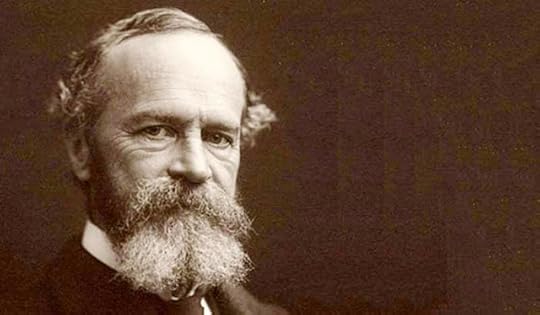
For quite a long while now, in many publications, I have been calling attention to the role of “alterations of consciousness” in Western esotericism (including, of course, the Platonic tradition, or more precisely – sorry Arthur! – Platonic Orientalism). If you look closely at the relevant texts and traditions, again and again you will find practioners experimenting with how to apply the “requisite stimuli” for influencing or altering human consciousness, resulting in visions, voices, mystical experiences, and so on. I have come to consider this absolutely central to the study of esotericism (it's been at my suggestion that the 2019 ESSWE conference, in Amsterdam, will be devoted to this topic), so how could I reasonably be suspected of attempting to exclude consciousness from the field? Nevertheless, Arthur takes me for an “externalist” who wants to censor experiential dimensions and prohibit scholars from even mentioning them. He thinks I blame him for discussing such dimensions in one of his books about Christian Theosophy: “Were I to remove [the experiential accounts of esoteric practitioners],” he protests, “it would no longer give the reader a sense of the theosophical tradition from the perspective of the theosophers, but rather would only give names, dates, and data.” Quite so! How could I possibly disagree? Just look at how much attention I give to such experiential accounts in my own publications, which are by no means restricted to just names, dates, and data. In short, again Arthur has gotten me confused with some other guy. The only real difference that I see between Arthur’s perspective and mine – but it is a very important one – is that I believe scholarly method should not be confused with mystical contemplation or other spiritual techniques. I see no reason why these two could not learn to co-exist in friendship and mutual respect, but trouble will arise if we require carpenters to use spoons or expect soup to be eaten with hammers. This means that in my capacity as a scholar (a carpenter) I will be using the tools of my trade: hammers, not spoons. Of course those tools will not allow me to have direct experiences of the transcendent: that is simply not what they are designed to do. But they can do many other things that I consider extremely valuable and important, which is why I am a scholar. When my working day as a carpenter is over, perhaps I will decide to take a cup of soup! That is a personal choice for which I’ll definitely need a spoon, and I’ll be happy to use it. But it will not be of much help to me during working hours.
Wouter is a self-appointed inquisitor
We finally come to what might be the core of the conflict. Judging from the book as a whole – and this is what I already suggested in 2013 – it seems that Arthur has rather little interest in secular methods as tools to be used on their own terms and valuable for their own purposes. Such approaches he seems to perceive as either inherently meaningless “nihilistic” pursuits (86) or as destructive instruments for expelling esotericism, mysticism, or Platonism from the academy (see for instance his discussions of various secular approaches on pp. 62-64, 125-18). This argument might seem surprising at first sight: after all, esotericism found itself excluded from the academy to begin with, and only thanks to the application of standard secular methods did it finally get included as an academic field. But in fact this is exactly what seems to be the problem, the real source of the pain: “in the name of ‘academic respectability,’ exactly what is esoteric about esoteric religion is excluded, making the field into a kind of ironically empty exercise” (82). In other words, Arthur thinks that the field has sold its soul in exchange for “academic respectability.” As one of the chief culprits responsible for this development, I am being framed throughout the chapter as a “self-appointed inquisitor” (83) who wants to “exclude” (72, 79, 82), “excise” (8), or “excommunicate” (72, 84) dissenting approaches from the academy.
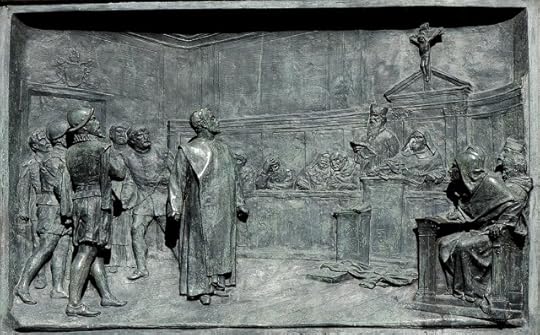 Giordano Bruno before the Holy Inquisition
Giordano Bruno before the Holy InquisitionThis is a very serious allegation, but the truth of the matter is rather different, and in fact very simple. I am trying to advance what I see as proper scholarly methods, and this involves not getting them confused with non-scholarly pursuits such as mystical contemplation or spiritual techniques (no matter how valuable I may – and in fact do – find those in and for themselves). For reasons already explained above, I believe that scholarly methods are simply incapable of gaining direct access to whatever transcendent reality might exist out there. They can only approach it indirectly and at second hand, and therefore they cannot give scientific proof of its truth and real existence. All they can do is report what practitioners are saying about it, and then try to analyze or interpret (by whatever methods, from hermeneutics to neurobiology) what might be going on in such transcendental experiences. Is it possible then to scientifically disprove the truth and real existence of transcendent realities? Here opinions differ. I would personally argue that it is not possible, which makes me an advocate of methodological agnosticism; others, along the lines of methodological naturalism (see above), seem to assume that it is possible. In this debate, the jury is still out. In any case, we are not dealing here with some conspiracy of academic “externalists” against Platonism or esotericism, but with a serious and legitimate debate about the limits of scientific method. I do not see anything “inquisitorial” about my concern with the boundaries of proper scholarly method. A better analogy is that of a professional teacher of music (a former occupation of mine). If a student fails her conservatory exam in classical guitar because she cannot play her scales and keeps hitting the wrong chords, nobody will accuse the teacher of “excluding” or “excommunicating” her from the profession. Nor will anybody be surprised to see her rejected if she does not take her guitar to the exam but insists on performing a dance instead (no matter how skillful!). Scholarship is scholarship; it has methods and standards. Mysticism is mysticism; it has other methods and other standards. The teacher of mysticism will send me home if I insist on sending him a research paper instead of practicing my meditation. And he will be right: he is not being inquisitorial, he is just doing his job. Finally: has the study of esotericism been selling its soul in exchange for academic respectability? I do not think that such a thing is possible. The soul of our field is embodied in the texts and traditions and practices that we study: it cannot be destroyed by whatever we may be saying about them as scholars. As for the tradition of critical scholarship: it has a soul of its own, which thrives on honest dedication to the pursuit of knowledge.
The practice of criticism
Let me sum it all up. I do not hate religionism; I am not a Protestant heresiophobe; I do not want to dump esotericism into the dustbin; I do not want to dismiss Platonism as “Orientalist”: I do not embody the externalist fallacy; I do not want to exclude the study of consciousness; and I am not inspired by any inquisitorial motives. Arthur’s list of accusations is so long and so seriously mistaken that, coming as it does from a well-known and prominent figure in the field, it just couldn’t be left unanswered. That I have chosen to respond on a public blog is for two reasons: firstly, I do not want this debate to be hidden behind the paywall of some closed-access academic journal, and secondly, the blog format makes it possible for readers to respond. I would welcome further discussion, for my rejoinder is not just addressed to Arthur personally but to the wider field of academics in the study of esotericism, where some might be getting the wrong ideas about what I advocate or represent. As I wrote at the very beginning, an unfortunate rift seems to have appeared in the community of esotericism scholars, and this is my attempt at reaching out to the other side.
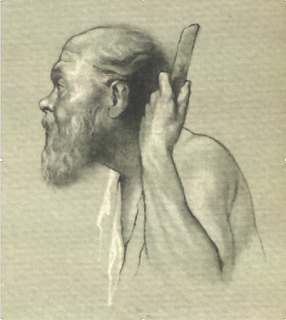 Therefore I would like to end on a positive note. One thing that Arthur and I have in common is that we share a deep love and admiration for the Platonic tradition. We both see it as absolutely central to the intellectual and spiritual culture of Europe, and we agree that Western esotericism would be inconceivable without it. But perhaps the choices we make within that tradition are slightly different. Arthur highlights the magnificent metaphysical architecture of Plotinus and Dionysius the Areopagite, with its splendid multi-leveled hierarchy ranging from the multiplicity of material realities to the ineffable One above Being itself. This perspective is admirable, beautiful, and profound – no question about it. As for me, my ultimate allegiance is not to these later Platonists, or even to Plato himself, but to Socrates. It is in Socrates that I find my model for the “methodologically” agnostic scholar, who is in search of knowledge because he knows he does not have it but cares about the truth.In the Symposiumwe read how he became a philosopher: it was because the seeress-priestess Diotima initiated him into the mysteries of Love and taught him to seek Wisdom (Symp. 201d-212a). Ever since, Socrates has known that he does not have wisdom – only the love for it. He is not up there in the world of eternal ideas but down here in the world of impermanence and change, together with his pupils, ignorant of the truth but filled with desire to find it. Sometimes he gives speeches while in a state of divine inspiration (as in the Phaedrus), but far more often he engages in dialogue: critical dialogue, sharp and precise, with the knife on the table, argument against argument, no quarter given! Socrates does not place himself above his pupils, proclaiming the Truth and expecting them to just accept it or raise themselves up to his superior level. On the contrary, he takes his position next to them, as their equal: he is just another human being like themselves, ignorant of the truth but searching for clarity. I am very well aware of how far the modern Academy has drifted away from its original Socratic model, but this is still what I think it should be: not an arena for power play and ego gratification, not a school where professors tell their students what they should do or believe, but a community of the ignorant devoted to the search for knowledge. In such a context, the practice of criticism has nothing to do with one person attacking another, for it is not a game with winners and losers, but a method for learning in which everybody wins. It is in this spirit that I have tried to respond to Arthur’s chapter, and I hope it will be understood as such.
Therefore I would like to end on a positive note. One thing that Arthur and I have in common is that we share a deep love and admiration for the Platonic tradition. We both see it as absolutely central to the intellectual and spiritual culture of Europe, and we agree that Western esotericism would be inconceivable without it. But perhaps the choices we make within that tradition are slightly different. Arthur highlights the magnificent metaphysical architecture of Plotinus and Dionysius the Areopagite, with its splendid multi-leveled hierarchy ranging from the multiplicity of material realities to the ineffable One above Being itself. This perspective is admirable, beautiful, and profound – no question about it. As for me, my ultimate allegiance is not to these later Platonists, or even to Plato himself, but to Socrates. It is in Socrates that I find my model for the “methodologically” agnostic scholar, who is in search of knowledge because he knows he does not have it but cares about the truth.In the Symposiumwe read how he became a philosopher: it was because the seeress-priestess Diotima initiated him into the mysteries of Love and taught him to seek Wisdom (Symp. 201d-212a). Ever since, Socrates has known that he does not have wisdom – only the love for it. He is not up there in the world of eternal ideas but down here in the world of impermanence and change, together with his pupils, ignorant of the truth but filled with desire to find it. Sometimes he gives speeches while in a state of divine inspiration (as in the Phaedrus), but far more often he engages in dialogue: critical dialogue, sharp and precise, with the knife on the table, argument against argument, no quarter given! Socrates does not place himself above his pupils, proclaiming the Truth and expecting them to just accept it or raise themselves up to his superior level. On the contrary, he takes his position next to them, as their equal: he is just another human being like themselves, ignorant of the truth but searching for clarity. I am very well aware of how far the modern Academy has drifted away from its original Socratic model, but this is still what I think it should be: not an arena for power play and ego gratification, not a school where professors tell their students what they should do or believe, but a community of the ignorant devoted to the search for knowledge. In such a context, the practice of criticism has nothing to do with one person attacking another, for it is not a game with winners and losers, but a method for learning in which everybody wins. It is in this spirit that I have tried to respond to Arthur’s chapter, and I hope it will be understood as such.
September 2, 2017
Imaginary Homelands: Stefan Zweig, Gershom Scholem, and George Prochnik
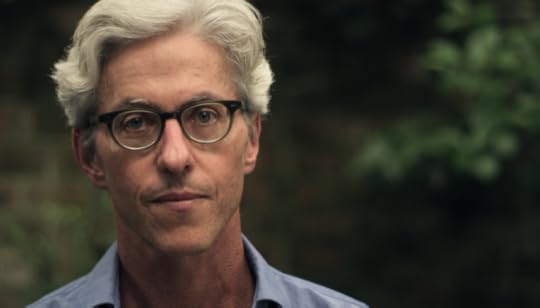 George Prochnik
George ProchnikTwo great Jewish writers and intellectuals of the twentieth century, Stefan Zweig (1881-1942) and Gershom Scholem (1897-1982): on one side we have the cosmopolitan advocate of humanistic tolerance, mutual understanding, and peaceful European integration who was forced out of Europe and died in isolation far from home in Brazil, while on the other side we have the Zionist and pioneering scholar of kabbalah whose search for the deep historical and existential roots of his Jewish identity led him to leave Europe behind of his own volition to build a new home in Palestine. The American author George Prochnik has published an impressive biographical diptych about these two famous personalities and their very different experiences and perspectives: The Impossible Exile: Stefan Zweig at the End of the World was published in 2014, and Stranger in a Strange Land: Gershom Scholem and Jerusalem came out in 2016. I found these two books to be full of valuable insights that carry deep relevance for the political and cultural conflicts we are currently experiencing. Just like about a century ago, once again we find the Humanistic and Enlightenment ideals of “cosmopolitanism and secular liberalism” pitted against the Counter-Enlightenment forces of “nationalism, religion, and identity politics.” What can we learn from comparing Zweig and Scholem?
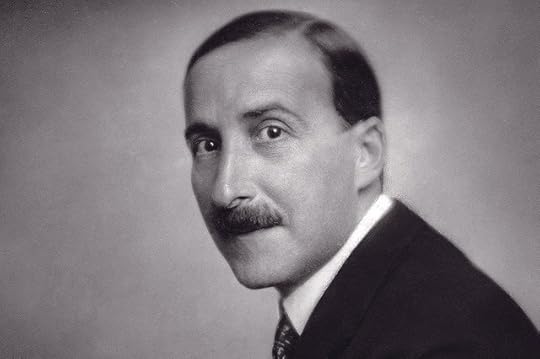 Stefan Zweig in 1917
Stefan Zweig in 1917
“I love the Diaspora,” Zweig wrote to Martin Buber in 1917. He went on to explain that he had “never wanted the Jews to become a nation again and thus to lower itself [sic] to taking part with the others in the rivalry of reality” (Exile, 134). When Buber responded by restating his Zionist convictions, Zweig insisted: “the more the dream threatens to become a reality, the dangerous dream of a Jewish state with cannons, flags, medals, the [sic] more than ever am I resolved to love the painful idea of the Diaspora” (135). Zweig felt perfectly at home in his native Austrian culture because he considered himself a citizen of Europe and the international republic of letters. Frankly, he could afford it. Born in 1881 in a very affluent Jewish family in Vienna, he seems to have been absolutely fine with both the ideals and the realities of cultural and ethnic assimilation that had worked out so beautifully for him. Almost to his own surprise – he never had a particularly high opinion about himself as a writer – all doors to fame and success seemed to open almost by themselves and he enjoyed a dream career as a writer. The world was his oyster.
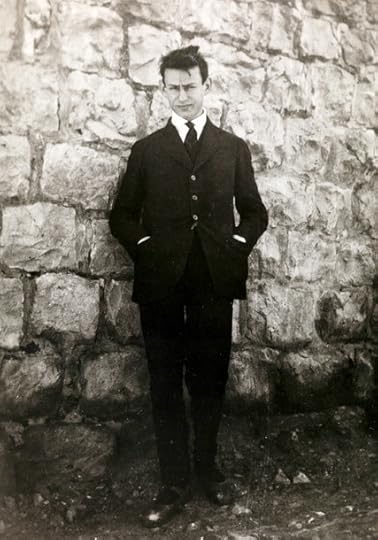 Gershom Scholem at twenty-seven
Gershom Scholem at twenty-seven What a difference with Scholem! Born in 1897 as the son of a printer living in Berlin, he was sixteen years younger than Zweig and rebelled violently against his bourgeois father with his strong assimilationist views. If Zweig felt he belonged to the German people (meaning the German-speaking peoples of Europe), Scholem would later dismiss such feelings of belonging as “a lurid and tragic illusion” for Jews, even on the level of culture alone (147; Stranger, 9). While Zweig was a typical representative of Liberal Humanism in the tradition of his hero Erasmus, Scholem’s deep concern was with his Jewish identity and he became a vocal activist on behalf of the Zionist cause. For Zweig, leaving Europe meant exile. For Scholem it meant liberation.
The Cosmopolitan Idealist
Reading Zweig’s autobiography Die Welt von Gestern (The World of Yesterday) in tandem with Prochnik’s The Impossible Exile about Zweig’s final years means receiving an introduction to the original meaning of Liberalism as an ethical and humanitarian ideal with deep roots in European history. Zweig had no sympathy for the American culture of capitalist consumerism that – especially in the form of its radical “Neoliberal” upgrade since the 1980s – is so often confused with Liberalism today. On the contrary, he felt that “global dance crazes, mass fashion, popular cinema, et cetera were leveling the cosmos of human expression ‘into a uniform cultural schema’,” and feared that “[t]he United States had inaugurated a ‘rush into servitude’ of the masses, clearing the way psychologically for dictatorships of every variety to seize power. If the Great War marked the first phase of Europe’s destruction, he concluded, ‘Americanization is the second’” (Exile, 235-236). Of course such words sound uncannily prescient today. In fact, reading Prochnik’s description of how the refugee Viennese psychoanalyst Ernst Kris discussed Hitler, I could not help noticing that he might as well have been talking about Donald Trump. The principles of demagoguery seem universal:
[Hitler] once said the masses were so dumb and so feminine, they would take anything you told them, so long as it was expressed in the manner of advertising catchphrases. “Truth is of no avail, but there must be an ideology behind it, something to inspire the imagination,” Kris explained (152).
As an alternative to the degenerate culture of American consumer capitalism, Zweig did not advocate a return to nationalism or a revival of populist Blut und Boden sentiments but quite their opposite: a Pan-European humanism grounded in tolerance and mutual understanding as guiding ideals that should be passed on from one generation to the next by means of responsible education, or Bildung. His confidence in this approach seemed boundless:
Reverence for Bildung, that magically potent idea of holistic, rigorously intellectual character development, predicated on fluency in the canon of Western knowledge, had made it impossible for educated Germans to take Hitler seriously, Zweig wrote. It was simply inconceivable that this “beer-hall agitator” who had not even finished high school, let alone college, “should ever make a pass toward a position once held by a Bismark, a Baron von Stein, a Prince Bülow.” In consequence, Zweig said, even after 1933 the vast majority still believed Hitler was only a kind of stopgap, and that the Nazis would prove a transient phenomenon. What Zweig did not make explicit in his memoir was that he’d made this mistake himself. No one placed a greater trust in the redemptive power of cultural education than did Zweig, who expressed his faith, even after Hitler’s appointment as chancellor, that the Third Reich would prove only a brief hiccup en route to the unification of Europe – the coming “world Switzerland,” as he labeled it. It took years for Zweig to really absorb the notion that the masses’ indifference to intellectual and cultural achievements might be a lasting condition. … The best response to Hitler’s popularity was not to demonize his supporters, Zweig believed, but to communicate to them the value of the rich German cultural legacy that was being jeopardized by Nazi politics (62-63).
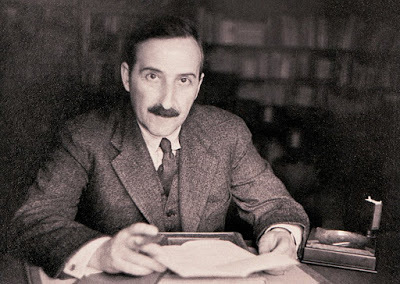 Today, of course, it is very easy for us to dismiss such statements as tragically naïve – much easier, in any case, than it is to explain how and why an attitude of dismissive cynicism about such highminded ideals should be any more likely to succeed! As Prochnik puts it – and I agree –, “Illusions are not to be eliminated but encouraged, since only the powers of imagination can summon a vision of a more humane future” (255). Zweig did believe deeply in the value of building bridges, by cultivating generosity and empathy (137) instead of hatred and suspicion. Seeking out alternatives to the privileged milieu of his own upbringing, during his younger years he spent much of his time “at motley bars and cafés squeezed between ‘heaving drinkers, homosexuals and morphine addicts’,” for (as he commented) “the worse someone’s reputation was the more I wanted to know him personally” (90). This fascination with the so-called “losers” and social outcasts who populated the seedy underbelly of bourgeois society was linked to an acute ethical awareness that “between power and morality there was rarely a bond but rather an unbridgeable gap” (358). The power that came with his own position as a famous writer never seems to have blinded him to the moral arbitrariness of the privileges he enjoyed. In other words, he never thought that his talent and success made him “better” than others. Having been accepted as a refugee by several countries in succession, these are his words to one of his benefactors in the last of them, Brazil:
Today, of course, it is very easy for us to dismiss such statements as tragically naïve – much easier, in any case, than it is to explain how and why an attitude of dismissive cynicism about such highminded ideals should be any more likely to succeed! As Prochnik puts it – and I agree –, “Illusions are not to be eliminated but encouraged, since only the powers of imagination can summon a vision of a more humane future” (255). Zweig did believe deeply in the value of building bridges, by cultivating generosity and empathy (137) instead of hatred and suspicion. Seeking out alternatives to the privileged milieu of his own upbringing, during his younger years he spent much of his time “at motley bars and cafés squeezed between ‘heaving drinkers, homosexuals and morphine addicts’,” for (as he commented) “the worse someone’s reputation was the more I wanted to know him personally” (90). This fascination with the so-called “losers” and social outcasts who populated the seedy underbelly of bourgeois society was linked to an acute ethical awareness that “between power and morality there was rarely a bond but rather an unbridgeable gap” (358). The power that came with his own position as a famous writer never seems to have blinded him to the moral arbitrariness of the privileges he enjoyed. In other words, he never thought that his talent and success made him “better” than others. Having been accepted as a refugee by several countries in succession, these are his words to one of his benefactors in the last of them, Brazil:You have been kind enough to honor me, to welcome me among you. I should feel proud and happy. But I must confess to you that at a time like this I am not able to feel happy and still less to feel proud. On the contrary, I feel heavy at heart that you should show me such friendship while countless people, our own and others, are suffering. We as human beings, and especially as Jews, have no right in these days to be happy. … We must not imagine that we are the few just people who have been saved from the destruction of Sodom and Gomorrah because of our special merits. We are not better, and we are not more worthy than all the others who are being hunted and driven over there in Europe (208).
The inevitable counterpart to Zweig’s humanitarian idealism was the deep despair he felt about the collapse of European culture and civilization caused by the Nazi takeover: as Prochnik puts it, towards the end of his life he seems to have lost all hope because he had “ceased to believe his works were part of any larger edifice” (259). He was haunted by premonitions of catastrophe, years before they became reality: “my nose for political disaster tortures me like an inflamed nerve” he told Joseph Roth in 1936 (130, cf. 218, 285). Just days before the Anschlusshe was watching in helpless horror as his fellow-Austrians were blissfully doing their Christmas shopping and going about their daily affairs: “Don’t you understand? All this will be gone in a few months’ time. Your homes will be plundered. Your clothes will be changed for prison garb” (176).
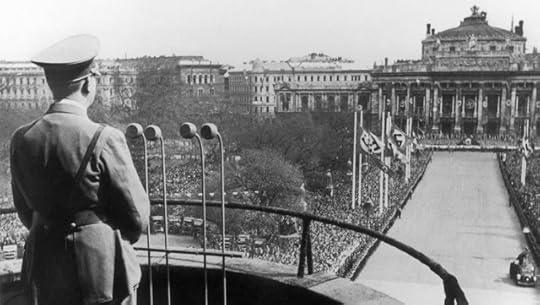 Prochnik gives much attention to the international refugee crisis that followed the Nazi takeover: “The trickle. The stream. The flood. And then people surging all over the globe, falling from the skies, splashed up by the seas, hurled helter-skelter by the wildly spinning red-and-black wheel” (204). In an analysis that should sound bitterly familiar to us today, he points out that even though the numbers of refugees that actually made it to America were astonishingly small, intentional propaganda and general paranoia caused many Americans to believe that their country was overrun with “millions of refugees,” “swamped with exiles to the point where millions of jobs and democracy itself were at risk” (205). Where have we heard such things before? For Zweig personally, exile brought the bizarre realization that while his “intellectual fatherland” no longer considered him to be German, the British did classify him as “German,” that is to say, as an “enemy alien” (164-165). In short, he found himself rejected by both Germans and non-Germans.What then about his Jewish identity? It didn’t help either. In a highly illuminating passage, Prochnik points out that for Zweig, the defining experience of exile turned out to be that of “being forced to identify with people who bore no relation to him” (164). He wrote that most Jews in Western Europe had no clue about why they were being thrown together for persecution (163):
Prochnik gives much attention to the international refugee crisis that followed the Nazi takeover: “The trickle. The stream. The flood. And then people surging all over the globe, falling from the skies, splashed up by the seas, hurled helter-skelter by the wildly spinning red-and-black wheel” (204). In an analysis that should sound bitterly familiar to us today, he points out that even though the numbers of refugees that actually made it to America were astonishingly small, intentional propaganda and general paranoia caused many Americans to believe that their country was overrun with “millions of refugees,” “swamped with exiles to the point where millions of jobs and democracy itself were at risk” (205). Where have we heard such things before? For Zweig personally, exile brought the bizarre realization that while his “intellectual fatherland” no longer considered him to be German, the British did classify him as “German,” that is to say, as an “enemy alien” (164-165). In short, he found himself rejected by both Germans and non-Germans.What then about his Jewish identity? It didn’t help either. In a highly illuminating passage, Prochnik points out that for Zweig, the defining experience of exile turned out to be that of “being forced to identify with people who bore no relation to him” (164). He wrote that most Jews in Western Europe had no clue about why they were being thrown together for persecution (163): [they were] no longer a community and had not been one for a long time. They had no law. They did not want to speak Hebrew together. Only exile swept them all together, like dirt in the street. … If Shylock’s famous question – “If you prick us, do we not bleed?” – was intended to show that the Jews share a common humanity with all mankind, Zweig approached the injustice of anti-Semitism by revealing the total absence of common ground between the Jews themselves (164).
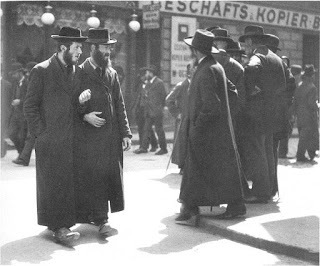 And that brings us to one of the most harrowing passages in the book, at least to this reader. Prochnik begins by discussing the famous passage in the 2nd chapter of Mein Kampf where Hitler describes how he became an anti-semite. On the streets of Vienna he saw an orthodox Jew in a long caftan with black curls, and found himself wondering “Is that a German?” His conclusion was that only the German language made it possible for Jews to pass as real members of the Volk: in fact they were cosmopolitans who could “speak a thousand languages,” and “if they ever got into power they would force everyone to speak an international language such as Esperanto” (155). From there, Prochnik cuts straight to a scene shortly after Zweig went into exile. He spent an evening in a Yiddish theater in London together with Otto Zarek, where they watched a performance about Jewish ghetto life in Russia:
And that brings us to one of the most harrowing passages in the book, at least to this reader. Prochnik begins by discussing the famous passage in the 2nd chapter of Mein Kampf where Hitler describes how he became an anti-semite. On the streets of Vienna he saw an orthodox Jew in a long caftan with black curls, and found himself wondering “Is that a German?” His conclusion was that only the German language made it possible for Jews to pass as real members of the Volk: in fact they were cosmopolitans who could “speak a thousand languages,” and “if they ever got into power they would force everyone to speak an international language such as Esperanto” (155). From there, Prochnik cuts straight to a scene shortly after Zweig went into exile. He spent an evening in a Yiddish theater in London together with Otto Zarek, where they watched a performance about Jewish ghetto life in Russia: … after the show Zarek was struck by Zweig’s state of acute nervous agitation. He could not contain his inner excitement. “These old Jews,” Zweig said, “in their grotesque dresses, their beards unshorn, their eyes flaming, these adherents to Chassidism … they are our brethren.” It was only the measures toward assimilation taken by their great-grandparents that had kept them from looking just like those Jews did, Zweig told Zarek. Had it not been for their near forebears, the two of them would have ended up “believing in what they believe,” considering “our life in the midst of the Western world as just a transitory period – we, too, would harbour in our very hearts, the dreams of our eventual ‘return to the land of our forefathers’.” Zweig comes within a hair of saying, “There but for the grace of God.” But Zarek said that Zweig’s voice took on a note of despair and resignation, as he registered that he hadn’t, after all, quite dodged the bullet (156).
Prochnik hardly needs to spell it out. To his enormous distress, Zweig was experiencing the very same kind of instinctive prejudice that had made Hitler an antisemite, and of course he was far too sensitive and intelligent not to realize it. In his own life he had always sought to emulate the spirit of Schiller: “I write as a citizen of the world. Early did I exchange my fatherland for mankind” (156). But now Hitler had deprived him of the community of language that constituted his true spiritual fatherland, and - not unlike what happens to the rich kid in Bob Dylan’s “Like a Rolling Stone” - those outcasts and “others” with whom he felt no spontaneous kinship had suddenly become his closest brethren whose company he could not avoid: “go to him now, he calls you, you can’t refuse…” Once upon a time Zweig had told Buber that he loved the diaspora, but now he had become a refugee himself and there was nothing he loved about it. He was longing not for the land of Israel (it struck me that he never seems to have considered seeking refuge in Palestine), nor for the Austria in which he had grown up. He missed Europe: his invisible community of the spirit, his universal republic of humanitarian brotherhood, his true cosmopolitan fatherland that represented inner freedom and unlimited possibilities, a land without borders that would welcome all comers. This was his true home, and it had come crashing down all around him. In the long run, the loss proved unbearable. On 22 February 1942, Stefan Zweig was found dead in his Brazilian home. He and his young wife Lotte had committed suicide together.
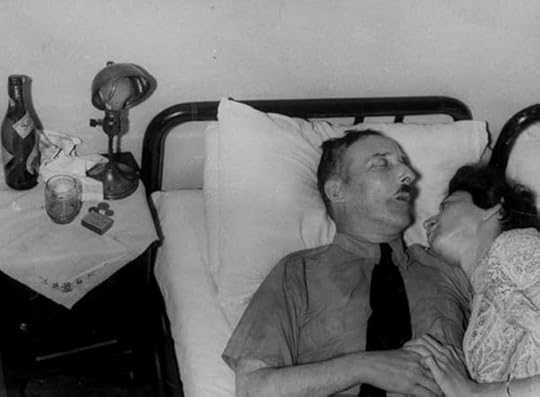 Stefan and Lotte Zweig on their deathbed
Stefan and Lotte Zweig on their deathbedQuite like his model of Enlightened Liberal Humanism Erasmus (whom he painted in sharp contrast to Luther as the archetypal “fanatic” with evident traits of Hitler), Zweig had never been a fighter. “I can only write positive things; I can’t attack” (65, cf. 290). Irmgard Keun once described this natural-born pacifist as “one of those noble Jewish types who, thin-skinned and open to harm, lives in an immaculate glass world of the spirit and lacks the capacity themselves to do harm” (246).
The Dialectical Zionist
In this regard his disposition could not have been more different from that of Scholem. While Zweig was ultimately powerless to defend himself against the forces that destroyed his glass world of the spirit, Scholem seems to have been born a rebel and a firebrand, a fighter by nature. It would seem that throughout his life, the only way he could conceive of anything whatsoever was in terms of dialectical struggle ruled by the paradoxical logic of coincidentia oppositorum. For Zweig, losing all hope could only mean that no hope was left – obviously. But Scholem’s logic worked differently: “In his final years he was very hopeless. He said that now the only thing that remained was hope,” his widow recalled (426). The paradoxicality of such a remark has Scholem written all over it. This profoundly dialectical mentality ruled Scholem’s life and career. I consider it the key not only to understanding his concepts of Zionism and of Jewish mysticism, but ultimately to understanding everythinghe ever did or thought. Consider the following list of conflicts and oppositions, which makes no claim to completeness:
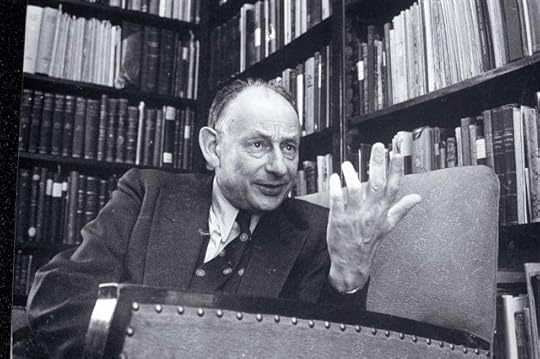
Scholem emigrated “from Berlin to Jerusalem” in spite of (or rather, I suspect, becauseof!) his core conviction that Zion was a messianic dream that could not and in fact should not be realized in this world. As a scholar searching for the roots of authentic Judaism, he explored the broader world of Hellenistic “paganism” and its legacy: I think he was driven by an intuition that the secret of Jewish life could be found precisely in the culture of the idolaters. As a model “historian’s historian,” he insisted on strict philology and textual criticism but applied these methods precisely to the “non-historical” world of mythical symbolism that appeals to the imagination rather than to strict literalism. While Jerusalem was in a state of siege, and extreme violence was rampant, he sat down to write a famous essay (analyzed at length by Prochnik) exploring the notion of “redemption through sin.” Scholem’s life-long search was for the authentic secret at the heart of Jewish tradition, as an alternative to the Germany he rejected, and yet the hermeneutics that allowed him to discover Jewish secrets was grounded in German scholarship, German Idealism, German Romantic speculation. He never ceased emphasizing that der Liebe Gott lebt im Detail, so that only by focusing on the particular and the unique could one gain lasting insights and discover general or even universal truths - and yet, he knew that without such general perspectives and a search for the universal, one would never succeed in opening the closed shell of the particular in the first place, and would fail to discover its hidden contents. Scholem could be described as a Jewish representative of the interwar “conservative revolution” who tried to impact the future of Judaism not by rejecting past traditions but by preserving and reviving them. In short, Scholem was a modernist struggling (like all modernists) with modernity itself. He was a rationalist driven by the energy of the non-rational: “my secularism is not secular” (58-59).
Whereas Zweig’s despair ended up killing him, Scholem’s dialectical mindset seems to have enabled him to use it as a creative force, as he wrote in a letter to Hugo Berman in 1947: “I live in despair, and only from the position of despair can I be active” (Briefe I, 331). In an earlier discussion of Scholem, I concluded that, for him
… the fact that eternity cannot appear in time mean[t] that the hope that sustains Jewish identity through history can only be called an “aspiration to the impossible.” Under these conditions, the historian must have the courage to “descend into the abyss” of history, knowing that he might encounter nothing but himself, and guided by nothing but a desperate hope for the impossible: that against all human logic, the transcendent might inexplicably “break through into history” one day, like “a light that shines into it from altogether elsewhere” (Hanegraaff, Esotericism and the Academy, 297).
Prochnik reads Scholem’s story as a mirror of his own. His book consists of two interwoven narratives, one of which traces the first four decades of his subject’s life (from his adolescent years of Sturm und Drang in Berlin to his reaching maturity as a scholar in Jerusalem during the 1930s), and one that describes his own deeply personal search for an authentic Jewish identity that led him and his wife Anne to emigrate from New York to Jerusalem in the mid-1980s. Scholem’s beginnings were very different from Prochnik’s though. He depicts himself and his wife as a couple of young starry-eyed idealists driven to Jerusalem on the wings of “a dream of compassion” (87). By contrast, the young Scholem was an angry extremist who “went into overdrive” (109) around the age of seventeen:
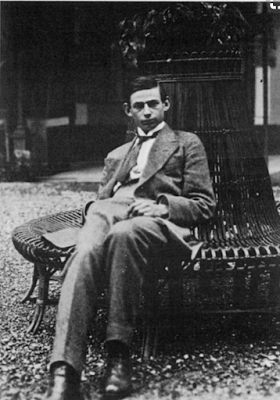 Thinking about the collapse of Europe led him to picture the Land of Israel as a kind of womb, streaming with the ages, awaiting insemination. … Scholem took solitary walks … during which he would scream out speeches that he ordinarily whispered. People stared at him, and he blushed. … He imagined a novella about his own suicide … “I would shoot myself after concluding that there was no solving the gaping paradox in the life of a committed Zionist.” Paradoxes, rages, fears, and desires were flying off the fabric of his being like burst buttons and seams. Raving on the street in some paroxysm of humiliation and fury, he might have hurled himself in front of a train or off a bridge. He might also have leaped on his father with any weapon at hand. He seems to come within a razor’s breadth of some irrevocable act of destruction. Scholem’s whole story might have ended before he ever reached Jerusalem. He craved too desperately for an impossible purity (110).
Thinking about the collapse of Europe led him to picture the Land of Israel as a kind of womb, streaming with the ages, awaiting insemination. … Scholem took solitary walks … during which he would scream out speeches that he ordinarily whispered. People stared at him, and he blushed. … He imagined a novella about his own suicide … “I would shoot myself after concluding that there was no solving the gaping paradox in the life of a committed Zionist.” Paradoxes, rages, fears, and desires were flying off the fabric of his being like burst buttons and seams. Raving on the street in some paroxysm of humiliation and fury, he might have hurled himself in front of a train or off a bridge. He might also have leaped on his father with any weapon at hand. He seems to come within a razor’s breadth of some irrevocable act of destruction. Scholem’s whole story might have ended before he ever reached Jerusalem. He craved too desperately for an impossible purity (110).Reading such passages, I could not ignore the contemporary parallels, uncomfortable as they might be. Prochnik describes a youthful Zionist hothead, in full rebellion against his father’s demand that he sacrifice his Jewish identity by “assimilating” and becoming an obedient member of German bourgeois society. Today we have the phenomenon of youthful Jihadist radicals born in the West, who likewise refuse the dictates of cultural “integration” and declare total war on Liberal society in the name of Islamic purity. Scholem’s brand of Jewish identity politics seems an extreme counterpart to the Liberal universalism represented by intellectuals such as Zweig, and often enough he would find himself brandishing “the torch of ethnic-historical particularity against the ambient moral glow of universal ideals” (105).Still it is important to emphasize that, for all his violent feelings of revolt, Scholem’s Zionism was predicated on the ideal of a peaceful settlement between Jews and Arabs. Having arrived in Jerusalem, he became a core member of the Brit Shalom (Covenant of Peace) movement that would later be described by one of its founders, Hugo Bergmann, as “the last flicker of the humanist nationalist flame, at a historical moment when nationalism became among all the nations an anti-humanist movement” (304). Sympathetic as its ideals might be, Prochnik does not spare his critique: Brit Shalom’s slogan “Neither to dominate nor be dominated” sounds somewhat less commendable if one realizes that its “commitment to absolute political equality with the Arabs was presumptuous at a time when Jews were still less than 20 percent of Palestine’s overall population” (305). Likewise, Scholem’s commitment seems to have been inspired more by “his aspirations for the ideal manifestation of Zionism” (307) than by any deep sense of fellowship with his Arab neighbors.Prochnik does not try to conceal the similarity of such attitudes to those of Anne and himself during their years in Jerusalem. Like Scholem, they desperately wanted to believe in the Zion of their dreams, but they had trouble seeing what was actually going on all around them in the state of Israel. Wondering what it must have been like for Scholem to enter Jerusalem for the first time, in late September 1923, Prochnik expresses doubt about whether the actual land of his forefathers had any reality for him at all:
DidScholem in fact see where he was once he arrived here – really notice it? In the hundreds upon hundreds of pages he wrote from Jerusalem, he barely makes mention of the natural surroundings. He might be writing from space, from a black box theater, or – most plausibly – from between old manuscript pages” (243).

Prochnik’s own descriptions of Israel are far more attuned to the natural environment, but he admits with brutal honesty that he and Anne – for all their idealism and excellent good intentions – had been utterly oblivious to the social and political realities of the state of Israel, until Yitzhak Rabin’s assassination on 4 November 1995 finally opened their eyes: “Anne and I hardly realized…,” “we gathered…,” “we had no clue…,” “we didn’t comprehend…,” “we had no notion…,” “without ever grasping…,” “we didn’t follow…,” “we could not fathom…,” “we could not begin to comprehend…,” “Anne and I could not understand…,” “knowing as little as we did…” (all on pp. 380-383). In terms of the ethical contrasts that underpin Prochnik’s two books – humanism versus fanaticism, like Erasmus versus Luther, liberalism versus authoritarianism, like Zweig versus Hitler – it was only after having returned to the US that Prochnik recognized the adversary who had been at work all along without him paying attention: Benjamin Netanyahu. “Only long after Rabin was dead did I realize how Netanyahu had always been there, placing himself at exactly the right spot relative to the firestorm to whip up the flames without getting singed, always preserving plausible deniability for the worst excesses committed by the followers he goaded” (356-357). Netanyahu had been whipping up his right-wing supporters against the peace process from the beginning (355), and it is chilling to reach Prochnik’s description of those rallies:
A chorus of support arose from amid the crowd: “In blood and fire we will do away with Rabin!” Torches were hurled at the police monitoring the demonstration. Chants of “Bibi! Bibi!” alternated with choruses of “Nazi! Nazi!” as images of Rabin with his head at the center of a bull’s-eye framed with the word “Traitor!” in Hebrew and English were brandished aloft (356).
In this violent context of populist hate-mongering, it appears that some enemies of the peace process resorted to kabbalah, in a particularly cruel refutation of Scholem’s attempts (rightly criticized by Prochnik, with reference to the scholarship of Jonatan Meir, 252-258) to deny it any relevance to modern and contemporary society:
 Leaflet "Song of Peace" with Rabin's blood on itOn the evening of Yom Kippur, right in front of Rabin’s official residence a few blocks from our apartment, a group of men stood in a circle draped in prayer shawls chanting softly. … [I]t later emerged that these men were uttering what they understood to be a kabbalistic curse, the Pulsa da-Nura, Lashes of Fire. At its climax, the leader raised his gaze to the prime minister’s residence and chanted, “I deliver to you, the angels of wrath and fire, Yitzhak, the son of Rosa Rabin, that you may smother him and the specter of him. … May you be damned, damned, damned!” The medieval legend surrounding this curse declares that its recipient will die within thirty days. And to the group’s satisfaction and awe, exactly thirty days later, Rabin was murdered.Yigal Amir, Rabin’s assassin, performed mystical rites just before pulling the trigger. As Rabin stood above him on the stage singing “Song of Peace,” Amir waited in the darkness, practicing the esoteric art of Gematria … Concentrating on lines from Genesis … a passage that includes the line “a smoking fire pot and a flaming torch passed between these pieces” – Amir found that by sliding forward one letter from each word to join the following word, the words “a flaming torch passed between” transformed into “fire, fire, there is evil in Rabin.” And then Amir knew his bullet would strike home (357-358).
Leaflet "Song of Peace" with Rabin's blood on itOn the evening of Yom Kippur, right in front of Rabin’s official residence a few blocks from our apartment, a group of men stood in a circle draped in prayer shawls chanting softly. … [I]t later emerged that these men were uttering what they understood to be a kabbalistic curse, the Pulsa da-Nura, Lashes of Fire. At its climax, the leader raised his gaze to the prime minister’s residence and chanted, “I deliver to you, the angels of wrath and fire, Yitzhak, the son of Rosa Rabin, that you may smother him and the specter of him. … May you be damned, damned, damned!” The medieval legend surrounding this curse declares that its recipient will die within thirty days. And to the group’s satisfaction and awe, exactly thirty days later, Rabin was murdered.Yigal Amir, Rabin’s assassin, performed mystical rites just before pulling the trigger. As Rabin stood above him on the stage singing “Song of Peace,” Amir waited in the darkness, practicing the esoteric art of Gematria … Concentrating on lines from Genesis … a passage that includes the line “a smoking fire pot and a flaming torch passed between these pieces” – Amir found that by sliding forward one letter from each word to join the following word, the words “a flaming torch passed between” transformed into “fire, fire, there is evil in Rabin.” And then Amir knew his bullet would strike home (357-358). Rabin’s assassination killed the dream: “Our sense of magical solidarity with the Land and the people dissipated like smoke after an explosion” (378). George and Anne Prochnik packed their things, took their children, and fled the scene: “Clutching the children. Clutching each other, we were blown into the air forty thousand feet above the earth and cast through the sky to America” (409). Back home they discovered that the end of their dream of compassion meant the end of their marriage as well.
... and all that remains is hope
Prochnik’s two books have at least one obvious thing in common: they are all about broken dreams. Zweig’s Humanist dream of Europe was destroyed by Hitler – so cruelly and so completely that he saw no future and decided to kill himself, taking his wife with him. Scholem’s Zionist dream suffered shipwreck on the hard rocks of nationalist Realpolitik; the German culture that had nourished his very understanding of Judaism was reduced to smoking ruins; and his people were murdered on an industrial scale and with a maniacal determination that defies imagining. As for Prochnik’s mystical and messianic dream of Jewish community - grounded as much in his understanding of Scholem’s antinomian dialectics of kabbalah and modernity as in the liberal and humanitarian idealism represented by Zweig -, it was blown to pieces by Yigal Amir and transformed into a cruel nationalist Blut und Boden caricature by orthodox fanatics and right-wing politicians.
Stories of failure and the loss of illusions. So what is the point? Why bother reading about dreams that do not come true - while nightmares do? Are we to conclude simply that all these highminded ideals about a better world and all these aspirations towards a better future are bound to end in disappointment and despair, leaving the final word to violent hatred, bloodshed, fanaticism, cynism, nihilism, power, and domination? Was it all in vain? Of course Prochnik asks himself the same questions, and he ends by quoting a wonderful legend about the Baal Shem that was told by Scholem at the end of Major Trends in Jewish Mysticism. Scholem in turn had heard it from the novelist S.J. Agnon, who might have found it in a Hasidic collection published in 1906. Its point is that even when all seems lost and gone forever – “when the sacred fire can no longer be lighted, the prayers can no longer be spoken, and the sacred place is no longer known” – in the end it is sufficient that the story can still be told. Perhaps this might explain why even stories that end badly, like those told by Prochnik, have the power - paradoxically - to inspire their readers rather than leaving them crushed and defeated. It is of vital importance that such tales be told, for they are all about hope, and hope remains alive as long as its memory remains alive - after all, whatever can be remembered in our personal or collective imagination can be imagined as real, and whatever can be imagined as real has not lost its potential of being realized. Sometime. Somewhere. Somehow.
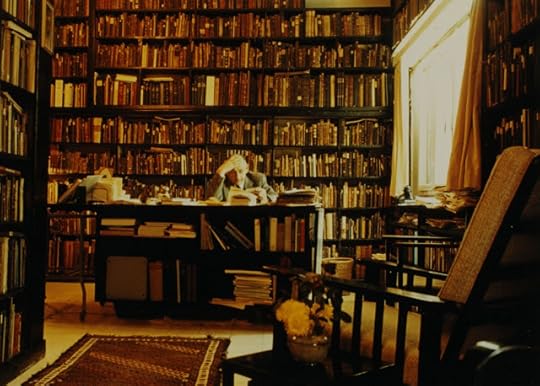
Wouter J. Hanegraaff's Blog
- Wouter J. Hanegraaff's profile
- 91 followers



